Inside the homes of the world’s most beautiful villages
Are these the world's most magical communities?
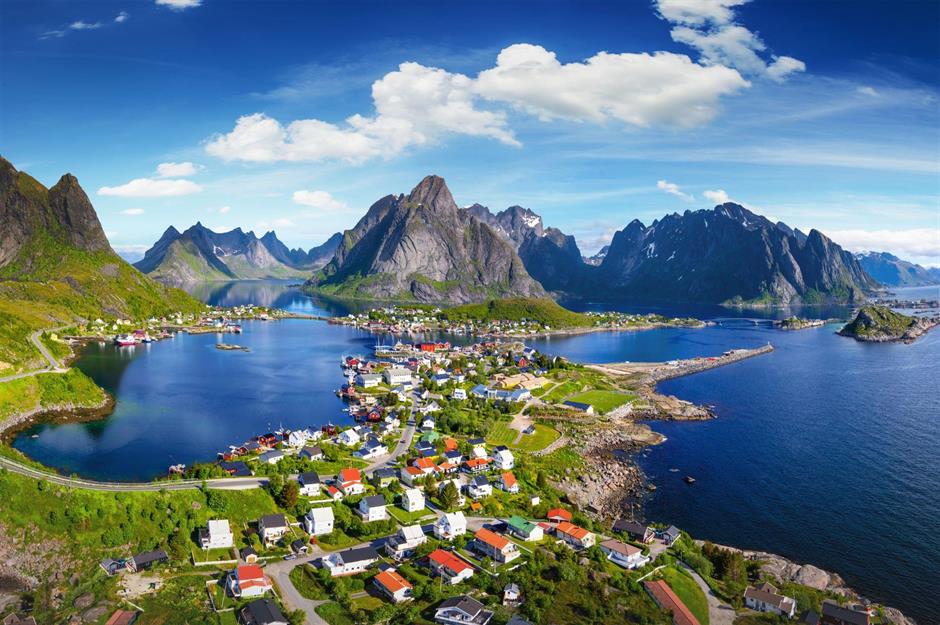
With their stunning scenery, unique architecture, and meandering pathways, these magical villages are a wonder to behold.
From the clusters of white-washed dwellings clinging to the hillside on a remote Greek island to the beautifully carved earthen homes in the foothills of the High Atlas Mountains in Morocco, these communities have a unique regional style and charm.
Click or scroll on to take a closer look at the exquisite homes and interiors in our pick of the world's most beautiful villages and small towns...
Castelnou, Pyrénées-Orientales,France

At the foot of the Aspres in the south of France, the quiet ochre village of Castelnou embodies Catalan rural architecture.
The pentagon-shaped castle, which dominates the village, offers spectacular views of the surrounding area.
Dating to the 10th century, its fortified walls and steep rock secured the village against attacks and served as the military and administrative capital of the Viscounty of Vallespir from 990.
Castelnou, Pyrénées-Orientales,France
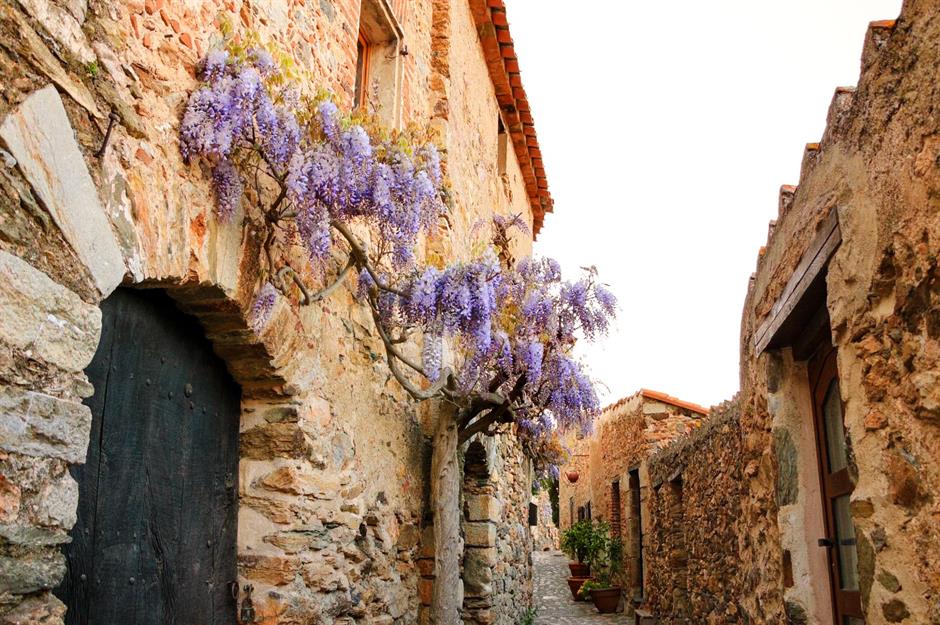
Contrasting with its impressive fortress, the village is criss-crossed by narrow cobbled streets lined with warm-hued houses with round-tiled roofs and adorned with vibrant flowers.
The village is organised around two parallel streets connected by occasional stairways. Some of the ancient houses feature external steps leading to small covered terraces and doorways beneath open into former barns or store rooms.
Some of the old ramparts remain, including the historic Millars Gate to the north which is flanked by two towers.
Castelnou, Pyrénées-Orientales,France
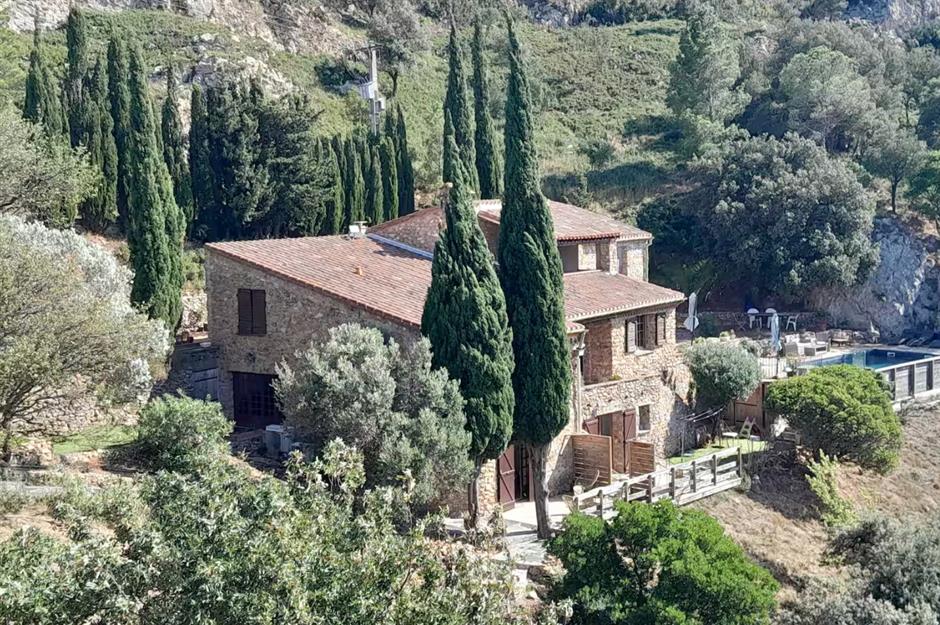
The best view of the village is to be had from the outside.
So, no wonder some villagers have moved out to the surrounding hills and built and converted beautiful homes like this exquisite Catalan farmhouse, which boasts unparalleled vistas of the medieval village, as well as the Pic du Canigou, the mythical mountain of the Catalans.
Castelnou, Pyrénées-Orientales,France
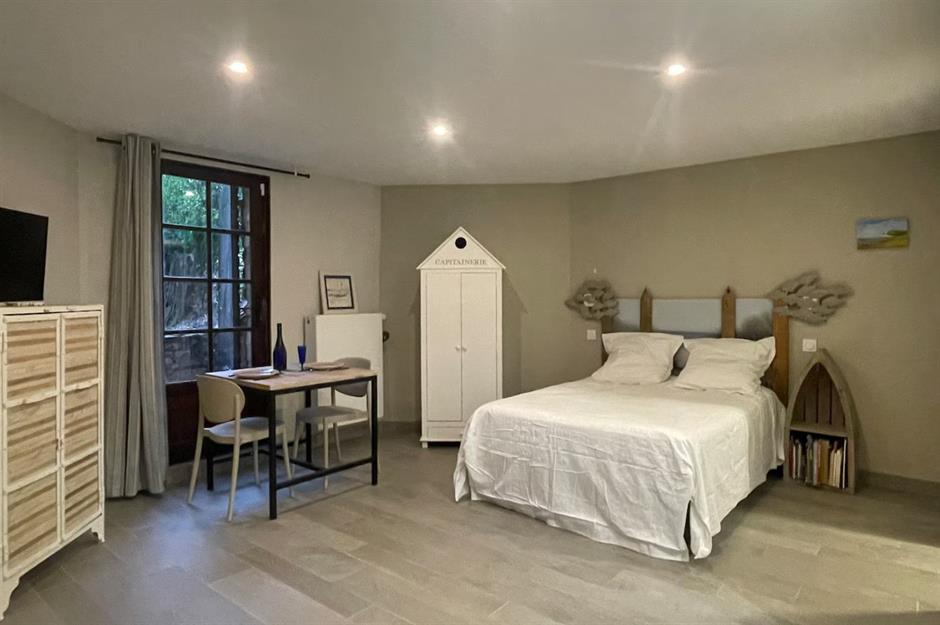
While the owners occupy the upper floors of the charming farmhouse, they have converted the ground floor into a self-contained studio apartment, which features this delightful bedroom.
The studio, available to rent on Airbnb, has a terrace with a dining table, garden chairs and stunning views as far as the eye can see.
Puerto de Mogán, Mogán, Gran Canaria
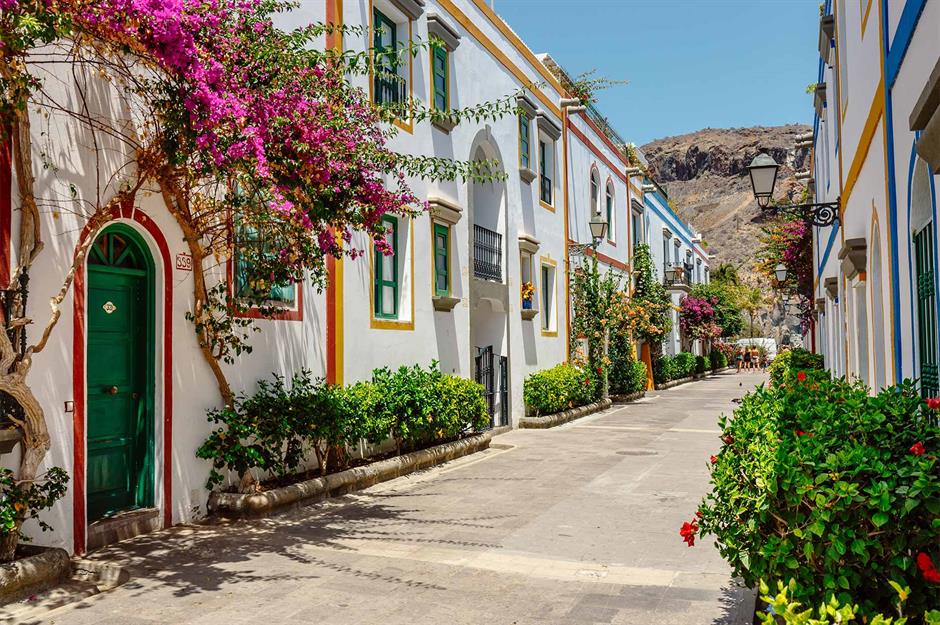
Puerto de Mogán is a picturesque fishing village on the southwest coast of Gran Canaria, Spain, where its network of pretty canals and bridges has earned it the nickname 'Little Venice.'
While the resort was built in the 1980s, the village dates back more than 200 years, and the old town area is full of colourful Mediterranean homes which line the marina. Mogán is also known for its popular open-air market, which fills the two plazas by the waterfront on Fridays.
Puerto de Mogán, Mogán, Gran Canaria
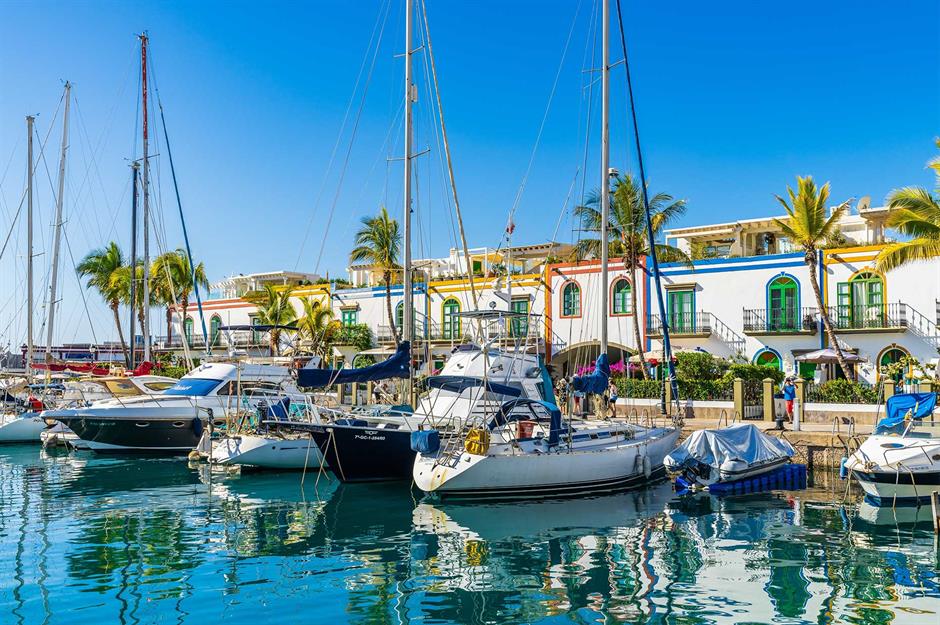
Originally a traditional fishing village, there is still a strong local community here, despite being a popular winter sun destination and consistently voted one of the best places to visit in the Canary Islands.
The beach, marina and picturesque old town provide plenty of entertainment. And with both temporary moorings and permanent berths in the marina, you can watch the pretty yachts bob back and forth to your heart's content.
Puerto de Mogán, Mogán, Gran Canaria
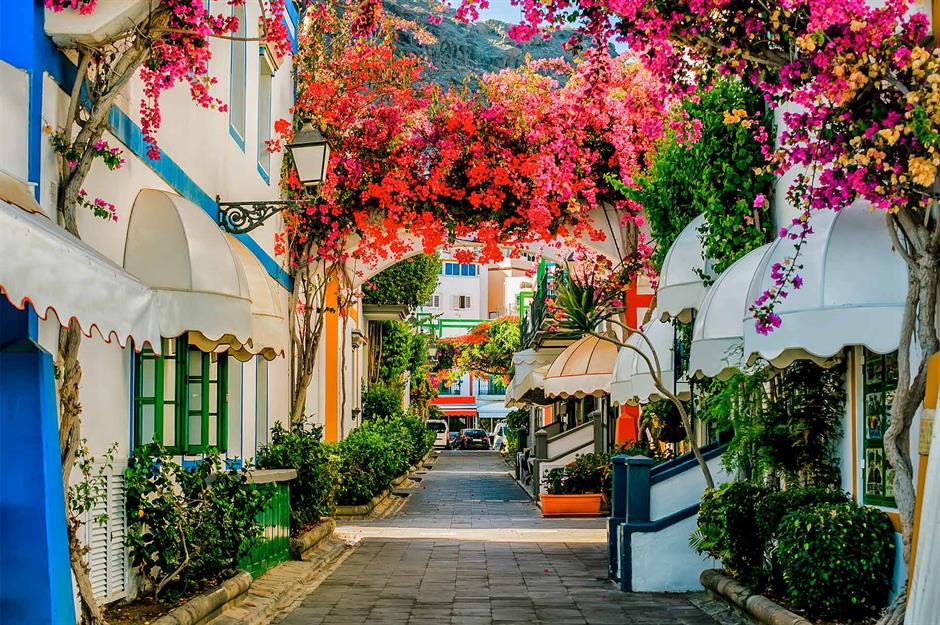
The oldest part of the resort is a quiet and beautiful residential neighbourhood that's utterly charming.
The whole bougainvillaea-filled barrio is pedestrianised with winding paths between well-maintained two-storey flat-roofed houses, many with roof terraces to enjoy the sun with stunning views of the marina.
Puerto de Mogán, Mogán, Gran Canaria
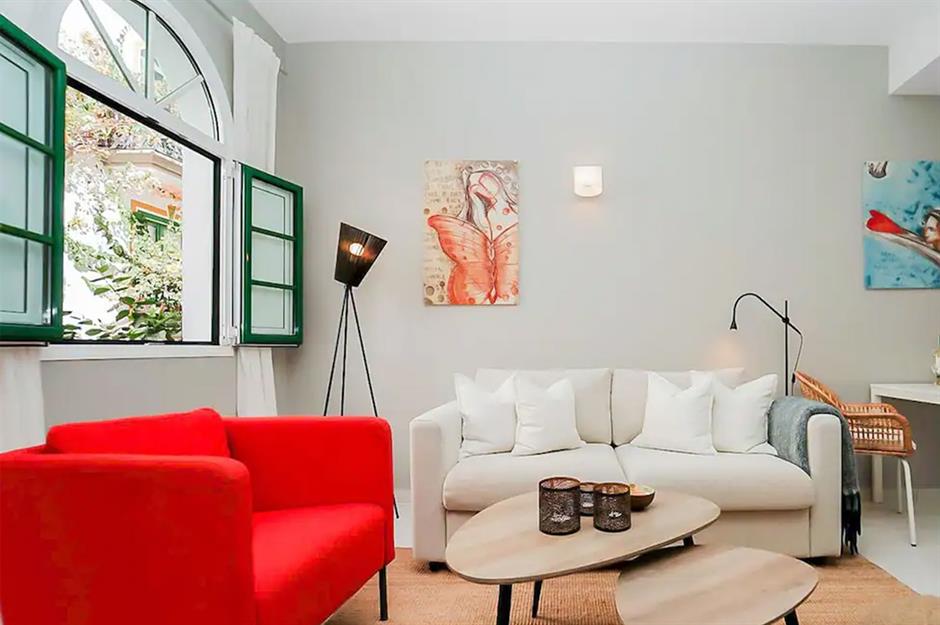
Properties in this quaint village include apartments overlooking the sea, penthouses with roof terraces as well as older cottages on the hillside. The low density of buildings here, however, means the resort still maintains a sense of calm and serenity.
Many of the marina-side properties are available to rent, and these light-filled apartments with colourful shuttered windows are the perfect base for a visit.
Queenstown, Otago, New Zealand
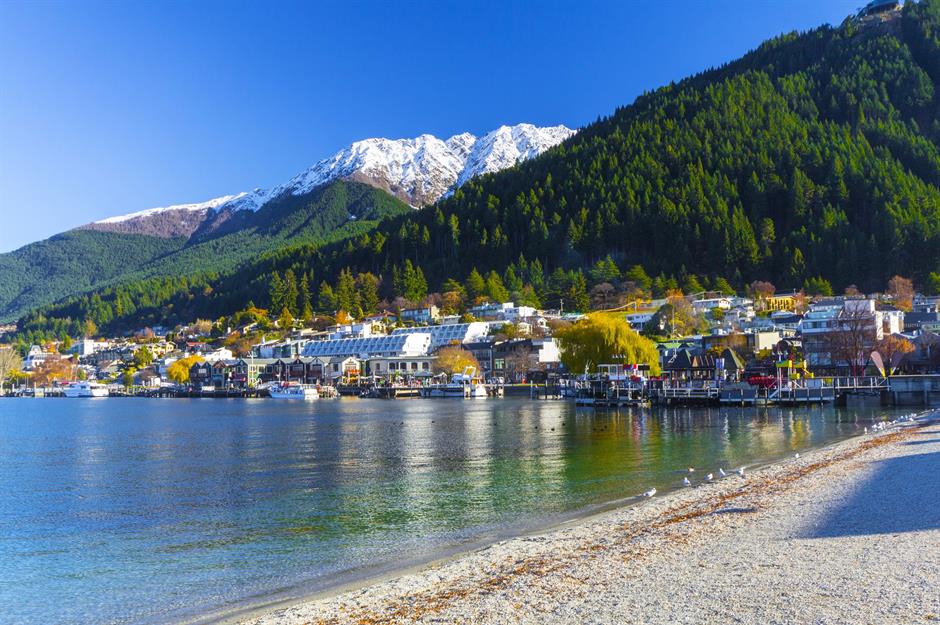
Sitting on the South Island of New Zealand, on the shores of Lake Wakatipu, Queenstown is undeniably one of the world's most attractive towns.
With the dramatic, snow-capped peaks of the Southern Alps jutting up around the settlement, Queenstown has quickly become a hub for adventure, sports and nature enthusiasts.
What's more, the so-called "adventure capital of the world" has a new ambition to become the first tourist town on earth to have a carbon-zero visitor economy by 2030.
Queenstown, Otago, New Zealand
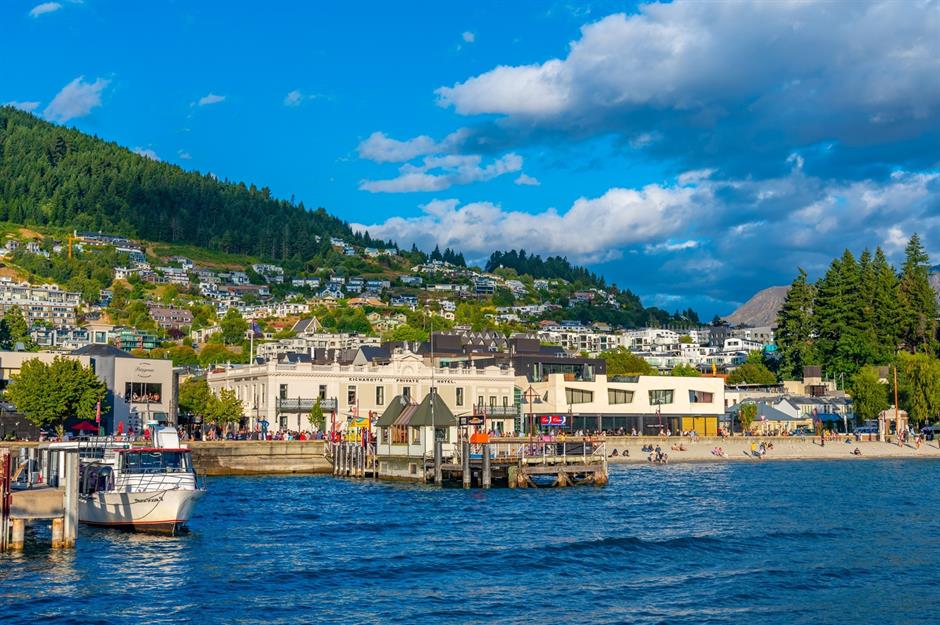
As well as being incredibly easy on the eye, Queenstown has a rich history, with the town dating back over 700 years. The Māori people chose not to settle in the area, visiting instead during the summer months to hunt for Moa, a type of flightless bird, and look for "pounamu," a precious green stone, indigenous to the South Island.
In 1853, Scottish settler Nathan Chalmers became the first outsider to see Lake Wakatipu and less than a decade later, the first Europeans settled in the area.
Queenstown, Otago, New Zealand
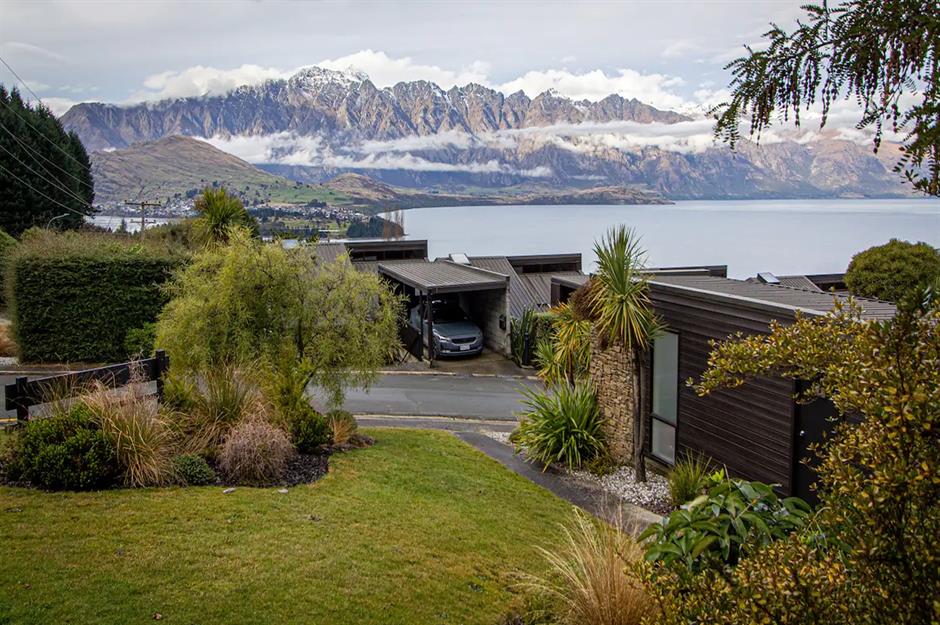
Queenstown's gold rush era began around 1862 and, thanks to this, the town is still home to plenty of traditional architecture, including the Eichardt's Hotel and St Peter's Anglican Church.
As for homes, Queenstown has fast become a property hot spot, with wealthy buyers snapping up plots and building incredible lakeside homes.
Queenstown, Otago, New Zealand
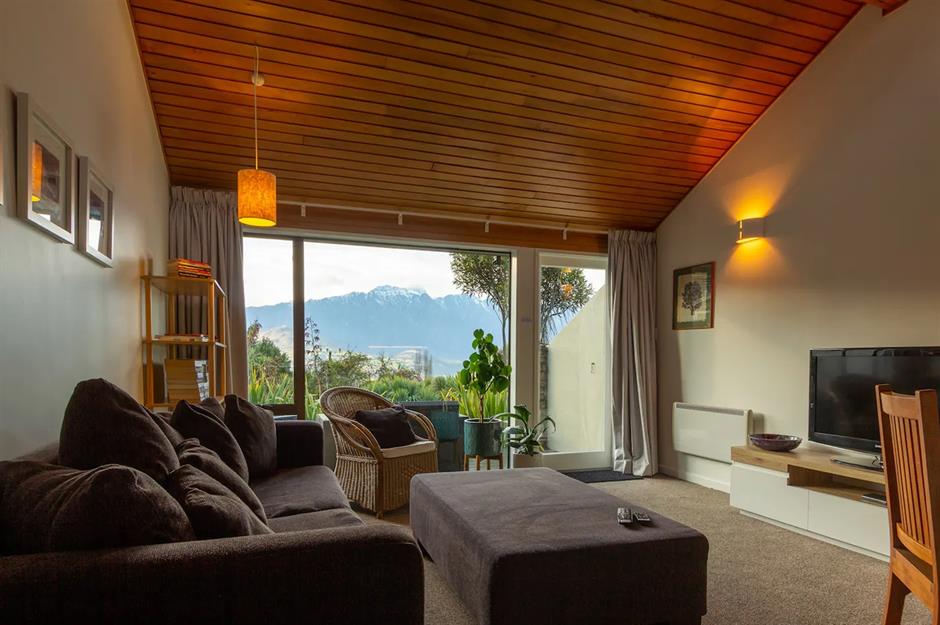
There are plenty of modest structures in the area, though, with many being used as holiday rentals. This Airbnb is a fine example of the sort of homes you'll find to rent in Queenstown.
Positioned facing the view, the cabin-style property has a cosy, open-plan interior, with exposed timber ceilings and big windows that frame the scenery.
Lunenburg, Nova Scotia, Canada
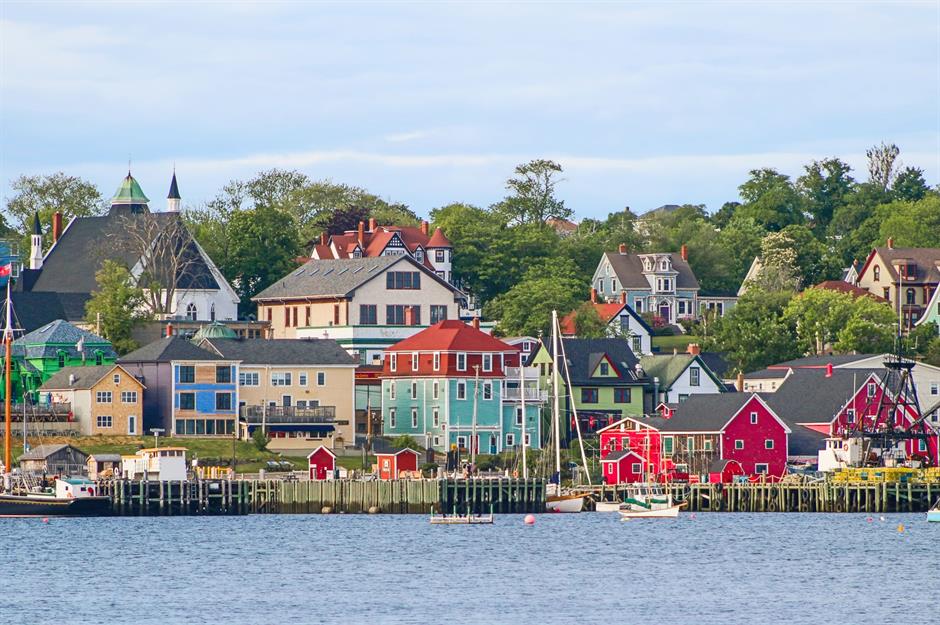
A port town perched on the coast of Nova Scotia, Lunenburg is a protected UNESCO World Heritage site. The title was awarded to Lunenburg's Old Town, which the organisation described as "The best surviving example of a planned British colonial settlement in North America."
Aside from being incredibly historic, it's also seriously pretty, with a bustling port, quaint boutique shops and brightly painted old buildings.
Lunenburg, Nova Scotia, Canada
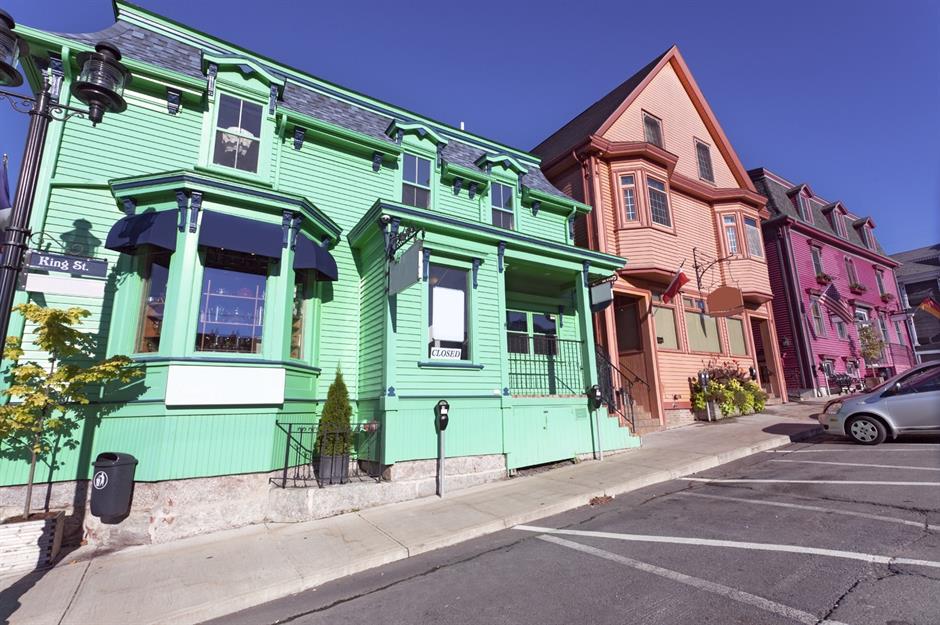
The town was founded in 1753 and, amazingly, 70% of the original buildings, which date from the 18th and 19th centuries, are still standing tall and proud on Lunenburg's waterfront.
From grand, Victorian-style painted ladies to bold red fishing huts, there's something to see on every street.
Lunenburg, Nova Scotia, Canada
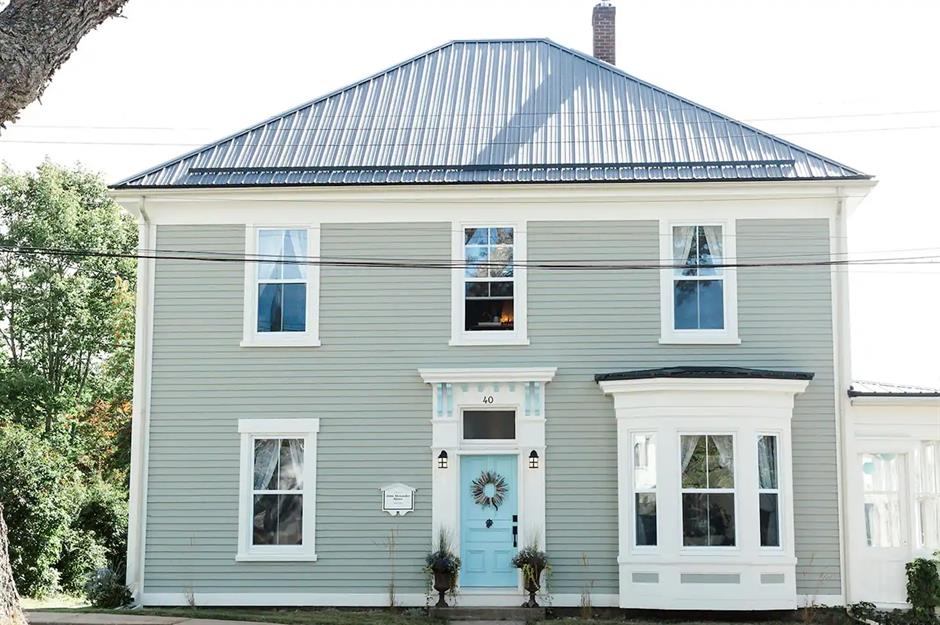
The town is estimated to be home to around 2,675 people, and while many of the buildings in Lunenburg will be private residences, some have been modernised and turned into guest houses and hotels, ready to accommodate the thousands of visitors that flock to the region each year.
This one, known as the Ivy House Inn, is a boutique hotel in the heart of town.
Lunenburg, Nova Scotia, Canada
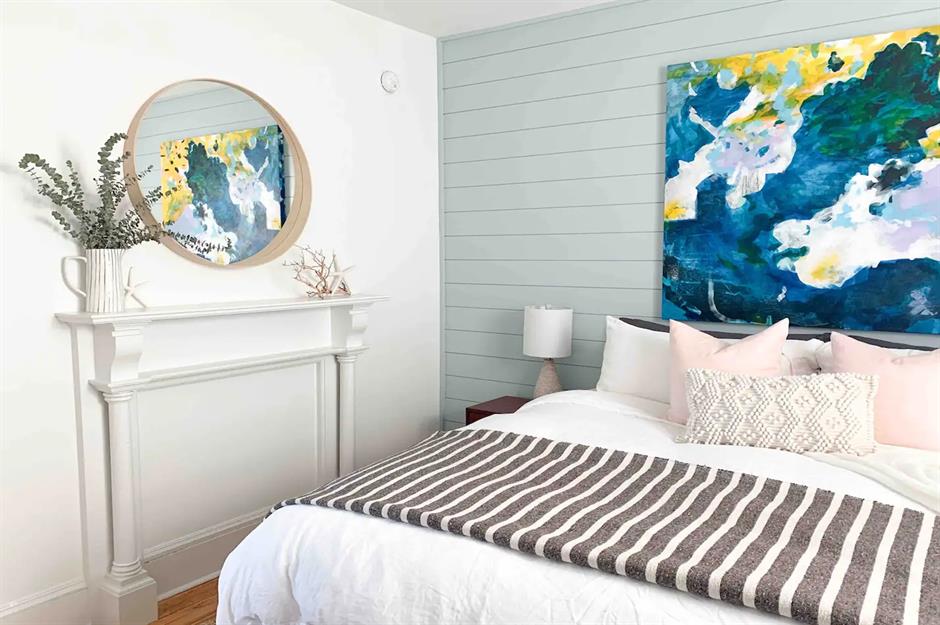
Luxurious and upscale, the beautiful 4,000-square-foot (371.6 sqm) heritage home was built in 1897 and offers chic and individually styled rooms for guests, with big beds and high-end fixtures.
The rooms blend modern décor with historic elements, like fireplaces, beamed walls and hardwood floors. The listing highlights that you can hear "church bells and ocean breezes" from your rooms. Sounds Blissful.
Guatapé, Antioquia, Colombia
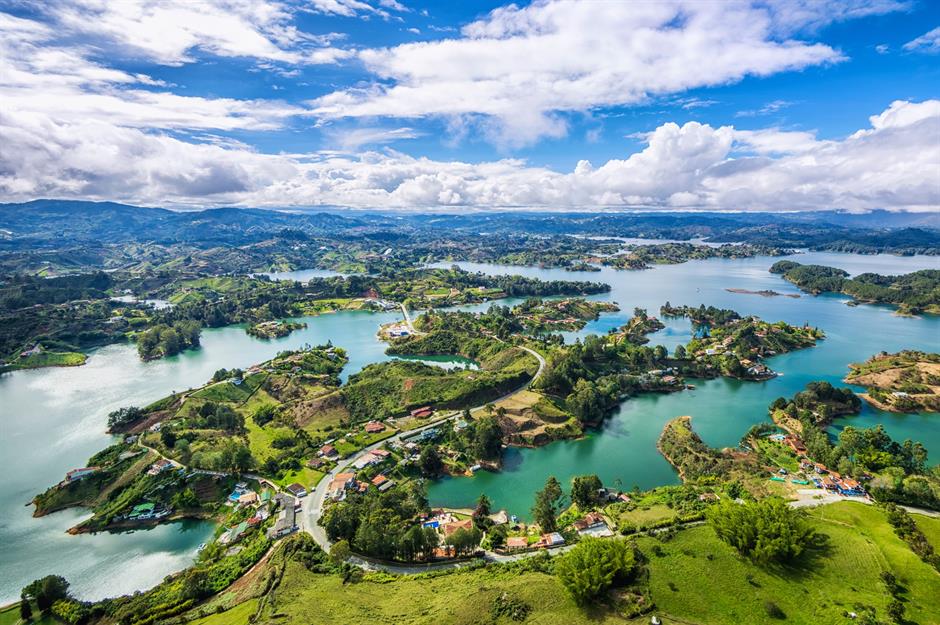
Guatapé is a stunning resort town, located in northwest Colombia. It's nestled alongside the man-made Peñol-Guatapé Reservoir and is perhaps known for two main things: the first being a giant granite rock, Piedra del Peñol, which decorates the town's southwest corner.
Visitors must climb hundreds of steps to reach the top of the rock, where captivating views can be savoured.
Guatapé, Antioquia, Colombia
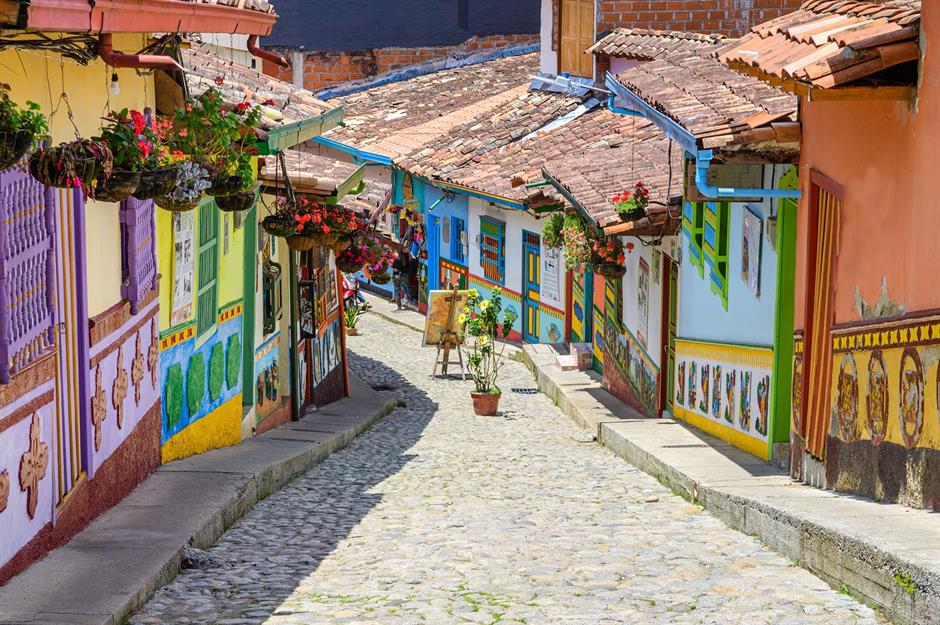
The second thing is the town's vibrant, patchwork architecture.
In fact, Guatapé has been called one of the world’s most colourful towns. Everything from doorways to balconies is painted in an eye-catching selection of hues.
Houses in the town date as far back as the 18th century. This street is just one example of the traditional buildings you could see on a visit.
Guatapé, Antioquia, Colombia
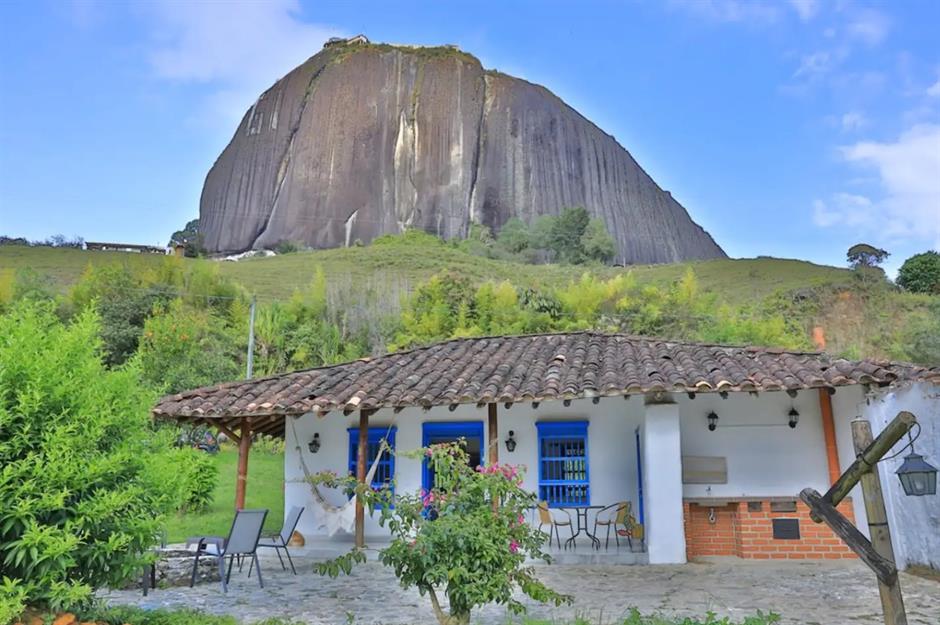
Across the town, you'll find plenty of different property styles, from lavish lakeside villas to cosy stilted cabins.
This authentic Andean cottage is a fine example of the sort of homes locals live in. This one is actually a holiday rental, but it was likely once someone's main residence.
The pad has access to the reservoir and is in the shadow of one of the area's iconic rock formations.
Guatapé, Antioquia, Colombia
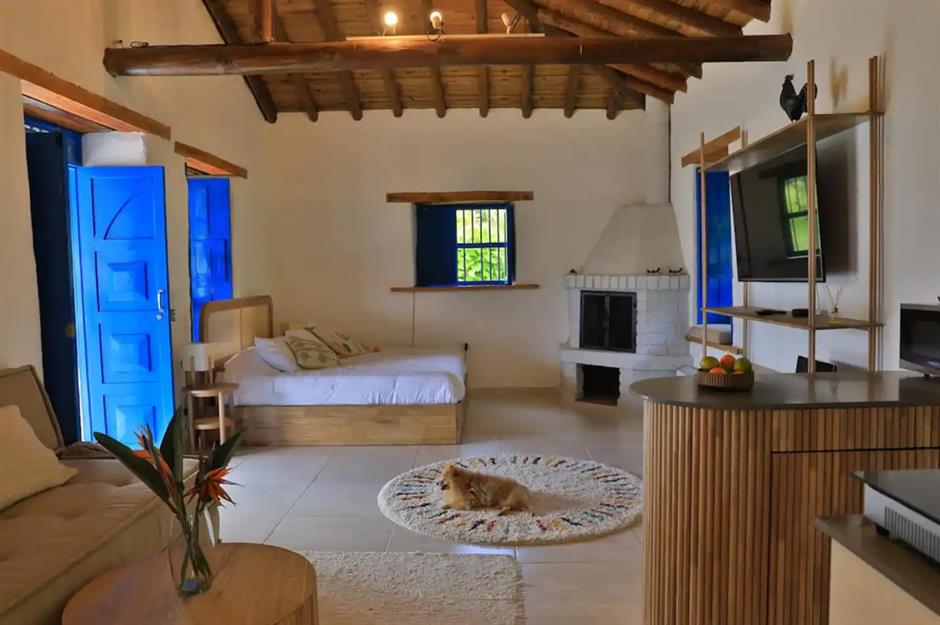
While the exterior of the cottage is defined by its white plaster walls, sloping tiled roof and cobalt blue accents, the interior boasts a gorgeous beamed ceiling, tiny windows and a traditional kiva fireplace in one corner.
Hallstatt, Gmunden, Austria
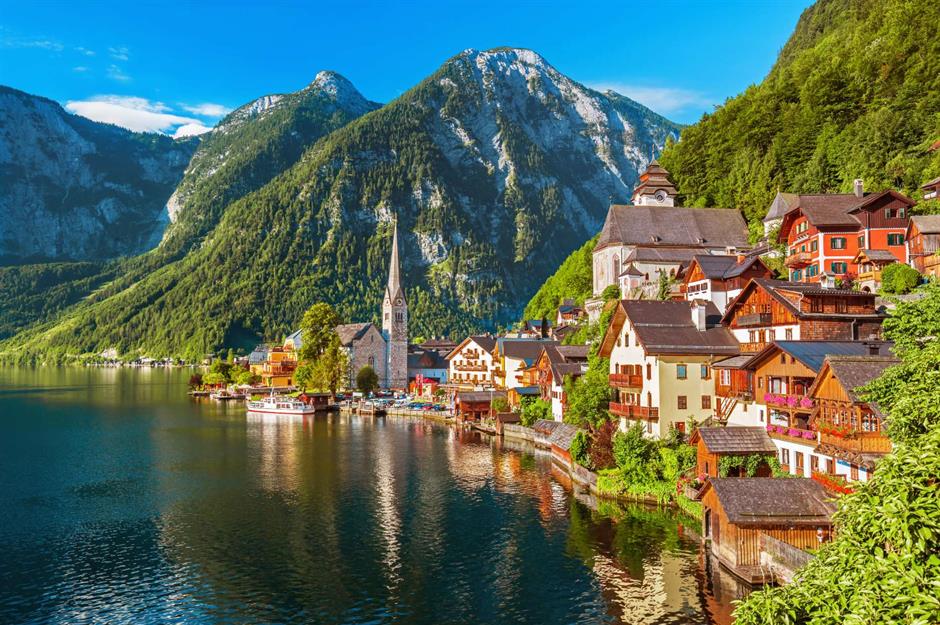
The stunning lakeside village of Hallstatt in Austria looks like it has popped out of the pages of a fairytale. Just an hour away from Salzburg, the picture-perfect streets are lined with houses built into the mountainside.
It is brimming with history and has been inhabited since prehistoric times, with impressive Bronze Age and Iron Age burials discovered in the area. Plus, the town can boast its own salt mine, which is said to be the oldest in the world.
Hallstatt, Gmunden, Austria

These traditional Austrian Alpine homes with their triple-pitched roofs create a fairytale village scene that was reportedly the inspiration behind the hit Disney film Frozen.
Most easily accessed by ferry, the small village has few cars and many houses here are built from a mix of stone and wood.
With their window-box flowers, beautiful wooden shutters and balconies and pastel paintwork, the houses make for an idyllic Alpine scene.
Hallstatt, Gmunden, Austria
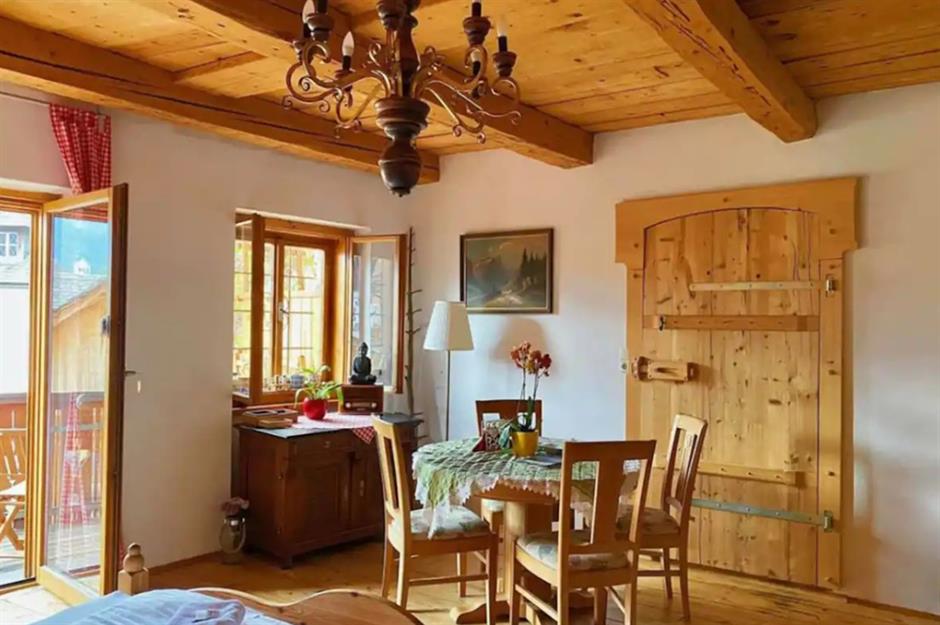
Many of the houses are just as quaint inside as they are out, with low wooden-beamed ceilings and world-famous picture-postcard views out over the lake.
Although some of the residences have been renovated to modern standards, the village is still known as one of the "most Instagrammable" in the world.
Hallstatt, Gmunden, Austria
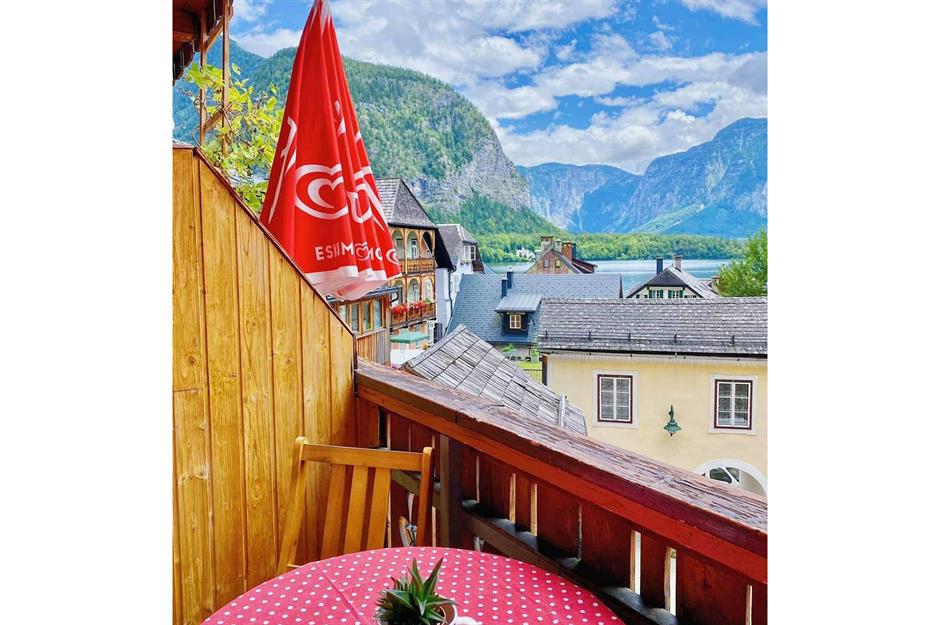
So popular is the UNESCO World Heritage Site that it has a replica village designed in its likeness in China. Hallstatt is often teeming with tourists, which means plenty of customers for local businesses and holiday rentals, such as this one.
In fact, the town gets so busy that many of the estimated 800 locals have called for measures to control the crowds, including limiting the number of daily visitors and banning tour buses after 5 pm.
Ogimachi village, Shirakawa-go, Japan
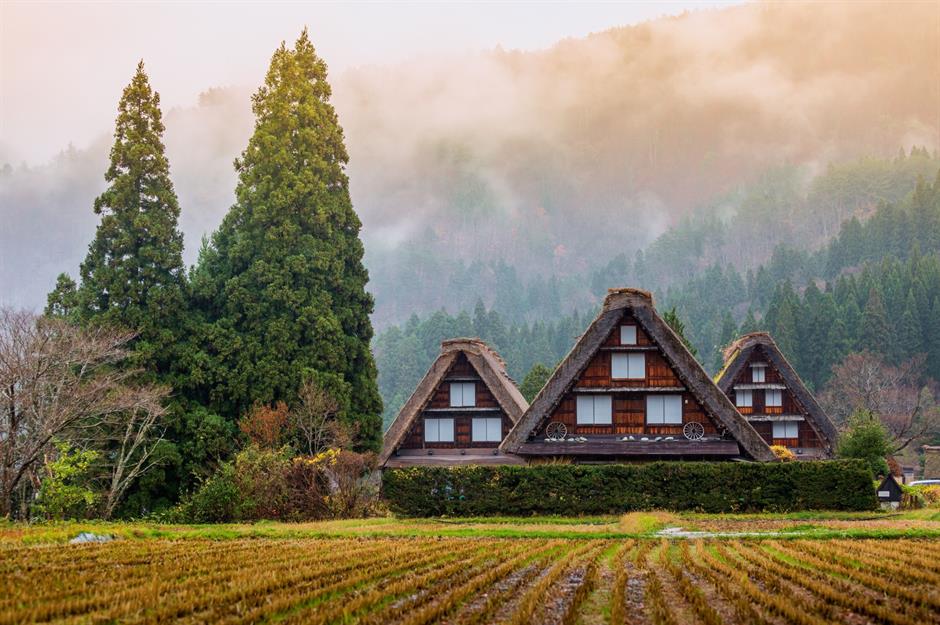
Rising from the misty Shogawa River Valley, the historic Ogimachi village in the Shirakawa-gō region is the Japanese village that time forgot.
Surrounded by lush mountains, Ogimachi has the highest concentration of traditional Gassho-style buildings in Japan.
Lining the edges of narrow roads and featuring colourful gardens, the well-maintained houses were built between 1800 and the early 1900s, and have a special place in Japanese culture.
Ogimachi village, Shirakawa-go, Japan
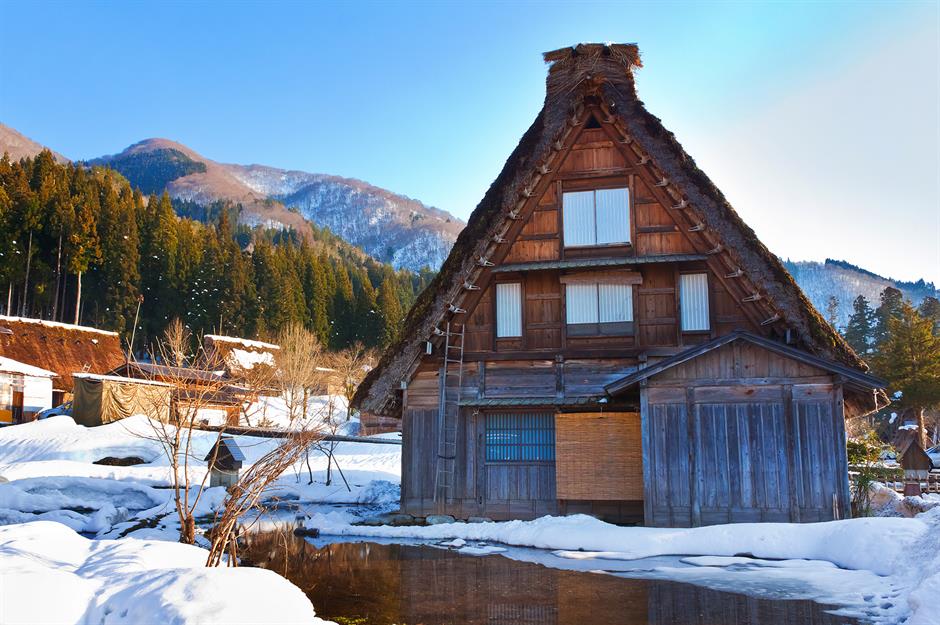
The unique buildings are called Gassho-zukuri, which translates to "hands in prayer" – the steeply sloping thatched roofs resemble a Buddhist monk’s hands pressed together in prayer.
This distinctive design means the homes can withstand the very heavy snowfall this remote mountain region receives in winter.
Ogimachi village, Shirakawa-go, Japan
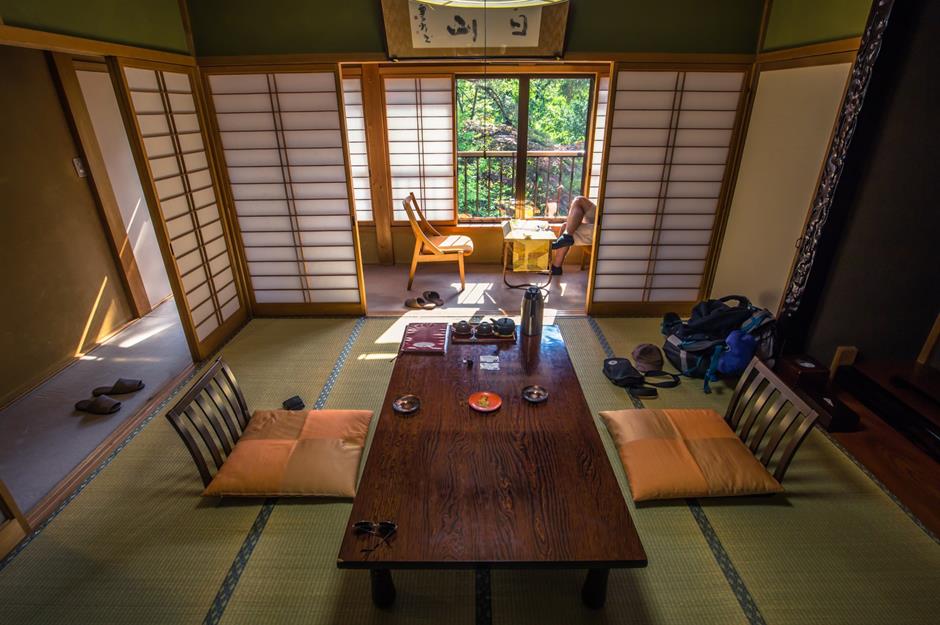
Airy and open, the large farmhouse-style homes are usually laid out over three or four levels, intended to accommodate extended family, too. This smart interior has a traditional Japanese low table with floor cushions as seating.
The sliding shoji doors serve as lightweight room dividers, making for a very flexible interior space that can easily be opened up for guests or enclosed for privacy.
Ogimachi village, Shirakawa-go, Japan
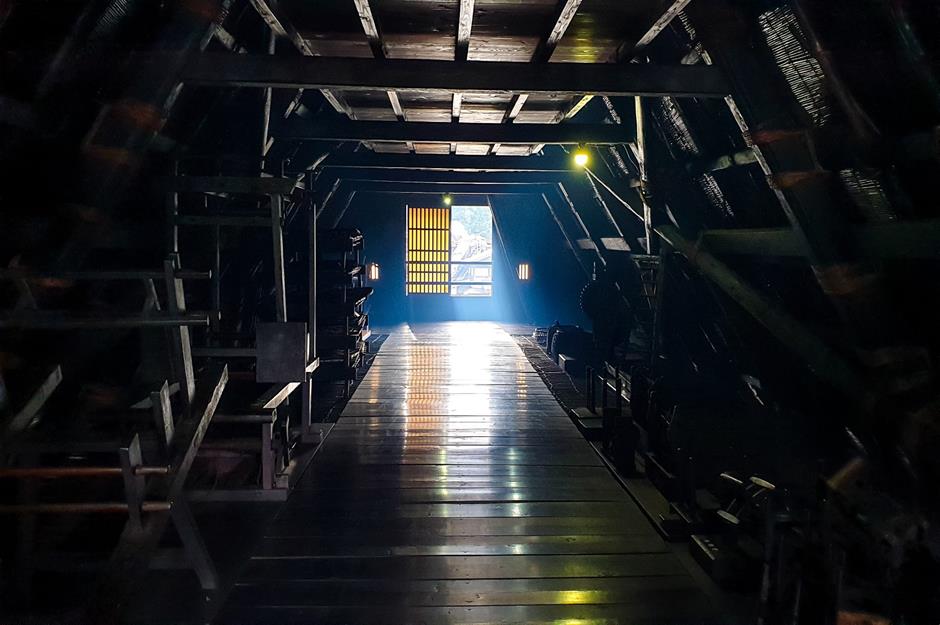
The homes have huge attics like the one pictured here. Due to the lack of agriculture across the area's challenging terrain, attics were traditionally used for cultivating silkworms to produce silk for fine fabrics.
Gassho houses are very rare and architecturally important in Japan, so they're preserved by the village's residents, of which there are around 600.
Today, many of the homes are museums, shops or guesthouses that teach visiting tourists about the important tradition.
Bibury, Gloucestershire, UK
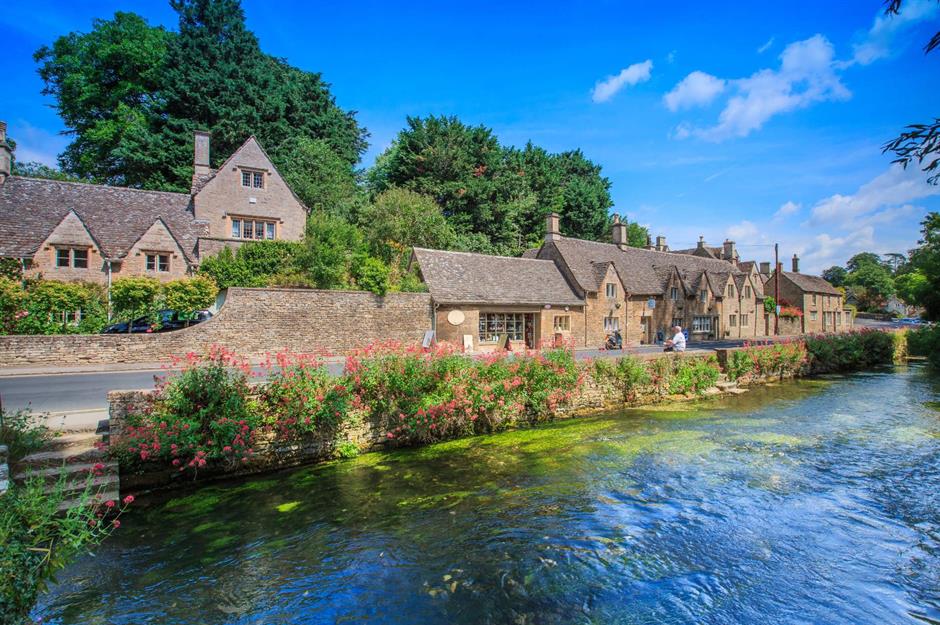
A pretty English village set in the magnificent Cotswold Hills, a designated Area of Outstanding Natural Beauty (AONB) in the UK.
It was once described as "the most beautiful village in England" by famous Victorian poet and textile designer, William Morris, and we can certainly see why.
With its rustic rows of chocolate-box cottages lining the banks of the shimmering River Coln, Bibury’s known for its gorgeous properties.
Bibury, Gloucestershire, UK
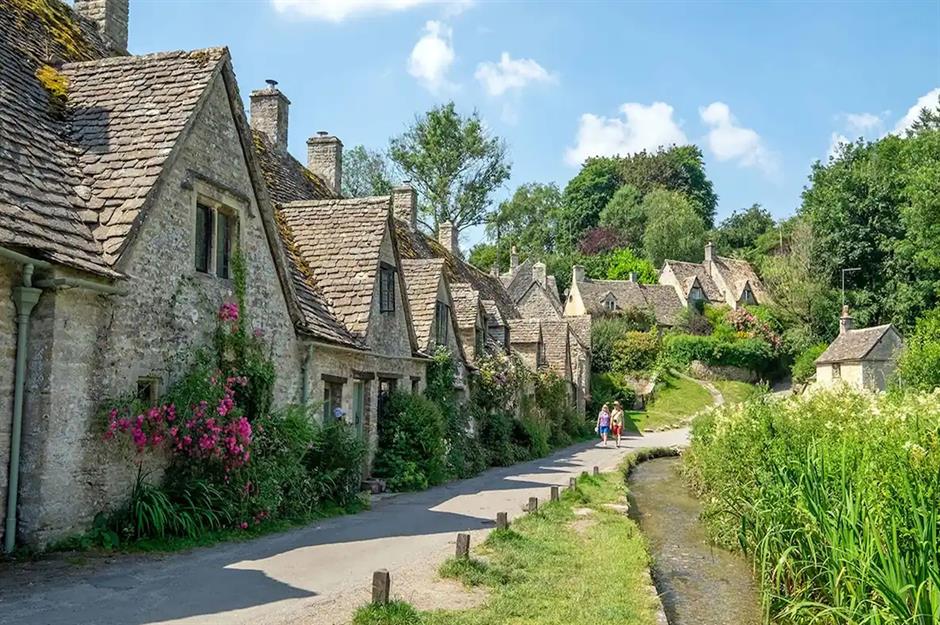
Overflowing with historical charm, some of the buildings were 14th-century wool storage barns, converted into weavers’ cottages in the 17th century.
The central street, Arlington Row, is so iconic, it was once pictured inside UK passports. It's also a popular filming location, with famous movies such as Bridget Jones's Diary filming scenes there.
Bibury, Gloucestershire, UK
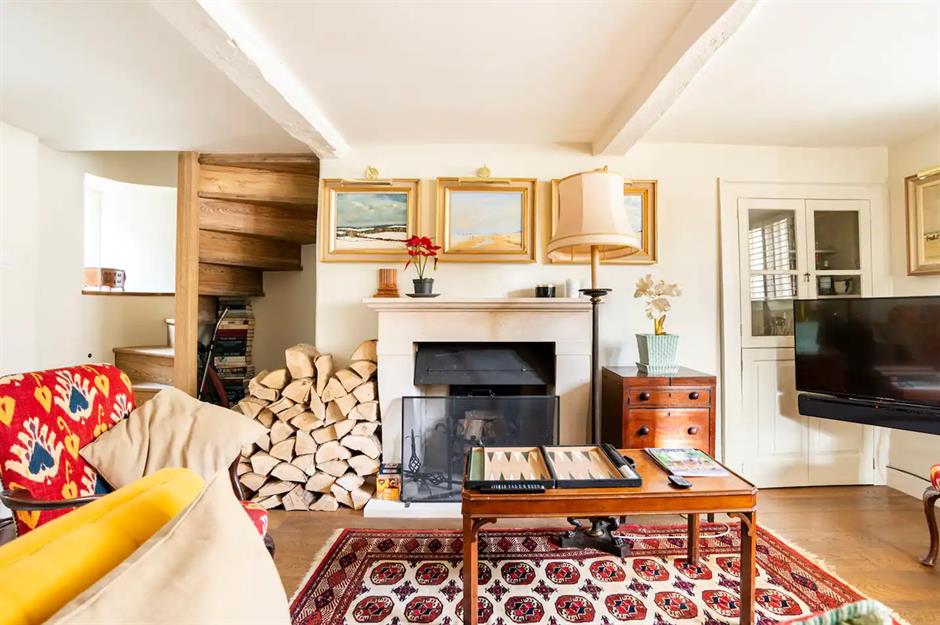
Most of the cottages are built with local Cotswold stone, which has a creamy yellow hue, whilst the roofs, made from Cotswold slate, are steeply pitched, often with gabled fronts. The homes tend to have a typical country cottage-style interior with low, beamed ceilings and deeply recessed small windows.
This holiday home celebrates the historic elements of the building, while providing guests with cosy and comfy amenities. The old timber staircase certainly draws the eye.
Bibury, Gloucestershire, UK
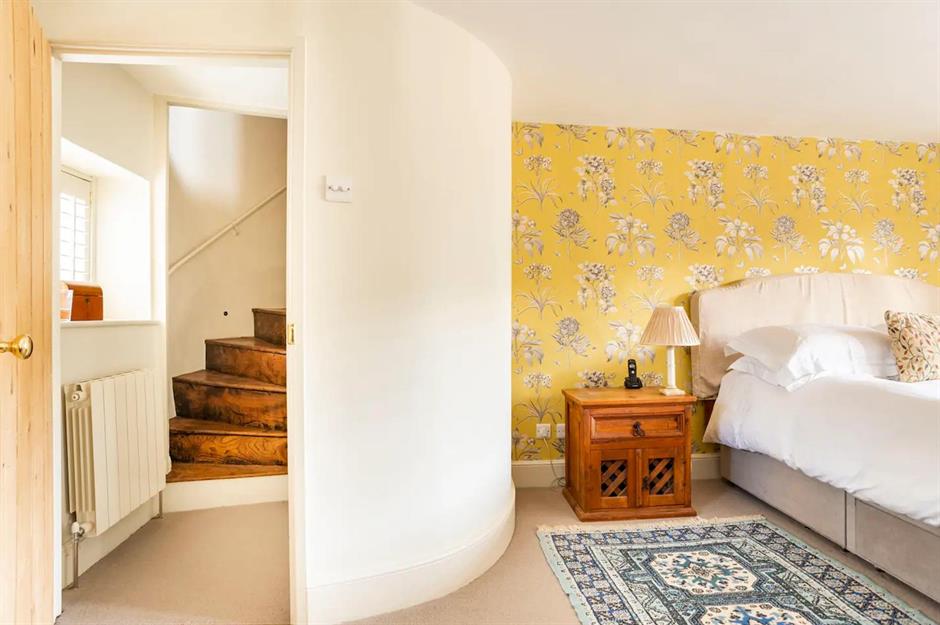
Many of the cottages have been restored or sensitively redesigned with modern-day comfort in mind, much like this vibrant and inviting bedroom.
Populated with tea rooms and lush rolling countryside, Bibury is the perfect place for a slice of the quiet life.
Aït Benhaddou, Ouarzazate, Morocco
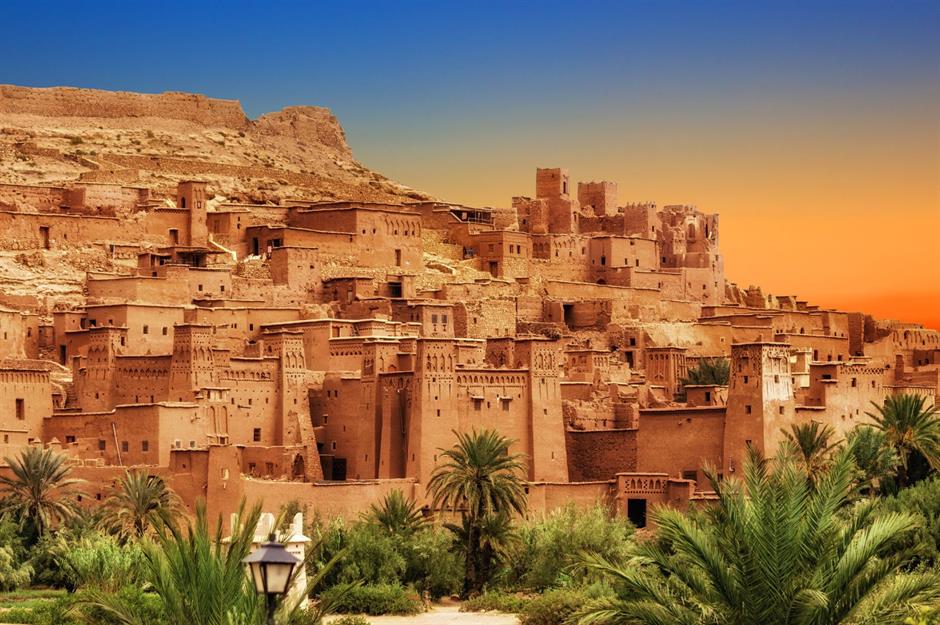
Nestling in the foothills of the High Atlas Mountains, the spectacular fortified village of Aït Benhaddou is one of the finest examples of Moroccan clay earthen architecture.
Since the 11th century, it was a key stopping point on the trade route through the Sahara Desert to Marrakech, although most existing houses date back to the 17th century.
The settlement is a fascinating mix of modest homes flanked by small castellated structures, all clustered behind defensive walls.
Aït Benhaddou, Ouarzazate, Morocco
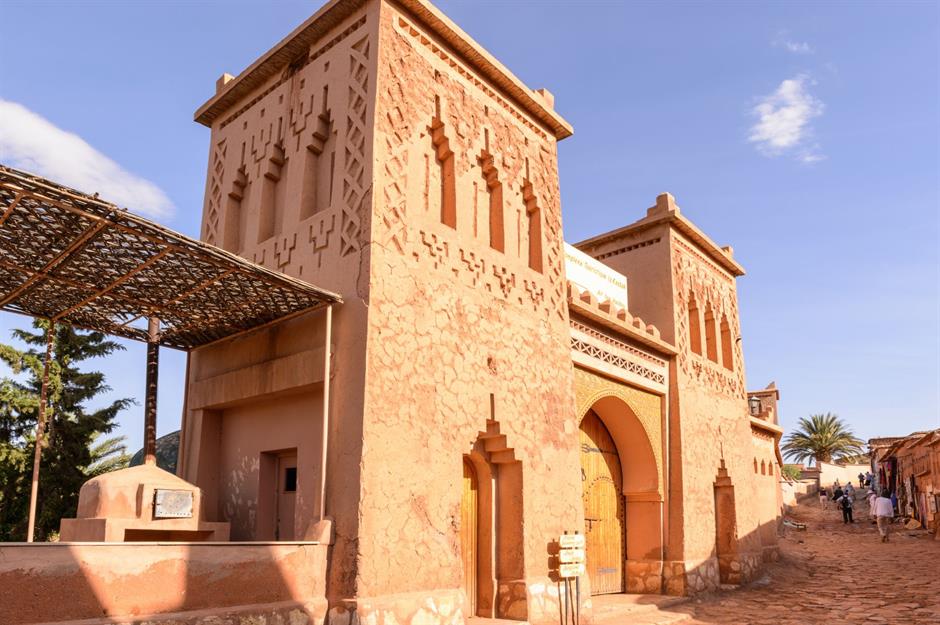
The fortress walls are strengthened with angle towers, beautifully carved with traditional Moroccan patterns. As a defensive tactic, the main baffle gate originally allowed entry only one way at a time.
Frequently used as a movie location, Hollywood blockbusters Alexander, with Angelina Jolie and Gladiator, directed by Ridley Scott were both filmed here.
Aït Benhaddou, Ouarzazate, Morocco
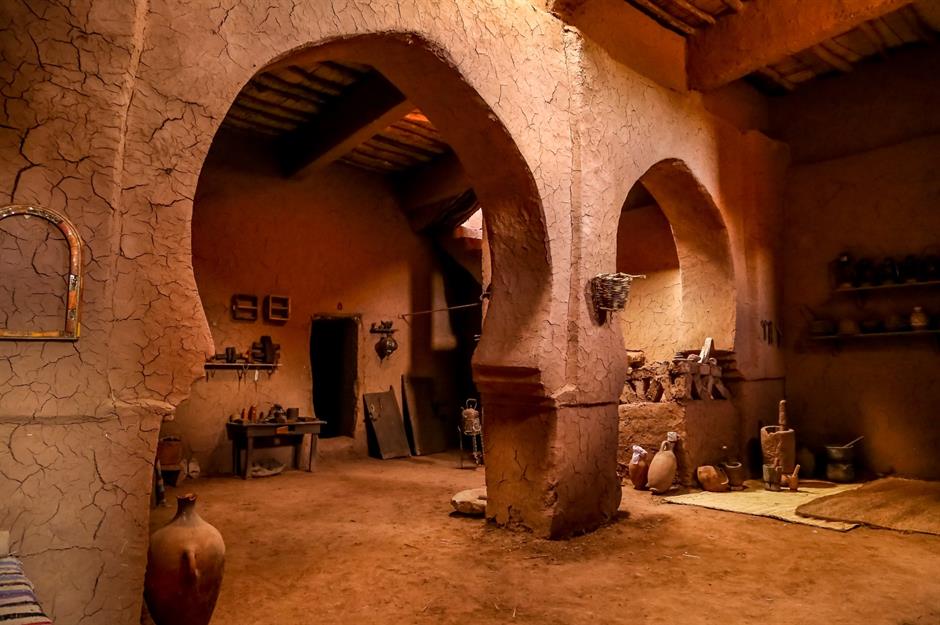
Here’s an amazing glimpse into the interior of one of the old houses.
The buildings are made entirely from compacted earth, clay bricks and wood. The traditional Moroccan keyhole-style arches seen throughout the interior are a stunning defining feature of the space.
Aït Benhaddou, Ouarzazate, Morocco
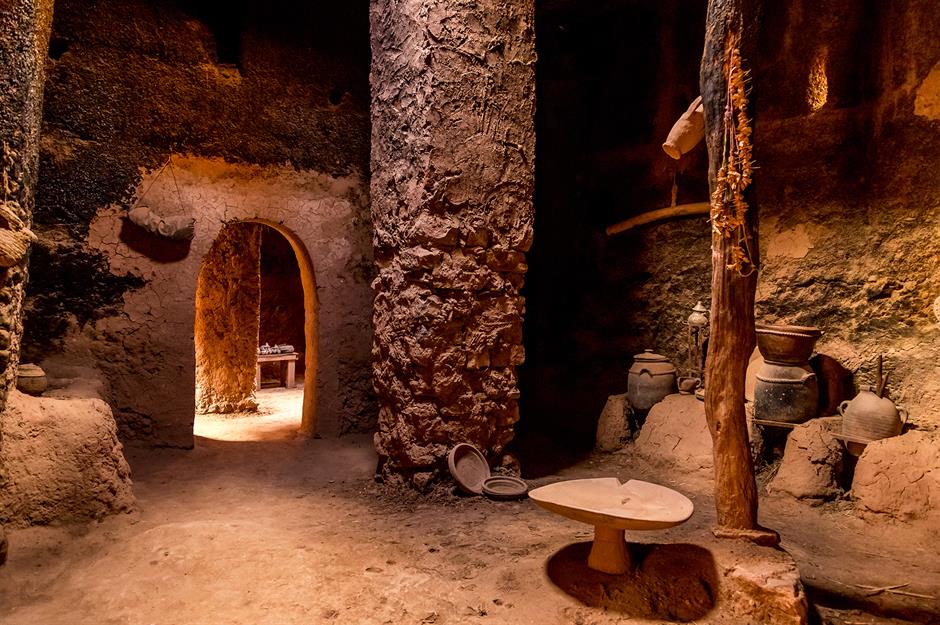
Most locals no longer reside in these incredible earthen homes, choosing instead to occupy more modern properties in the village on the other side of the river.
Many make a living from the area's agriculture and the multitudes of tourists that flock to the region and its mesmerising ancient village.
Carmel-by-the-Sea, California, USA
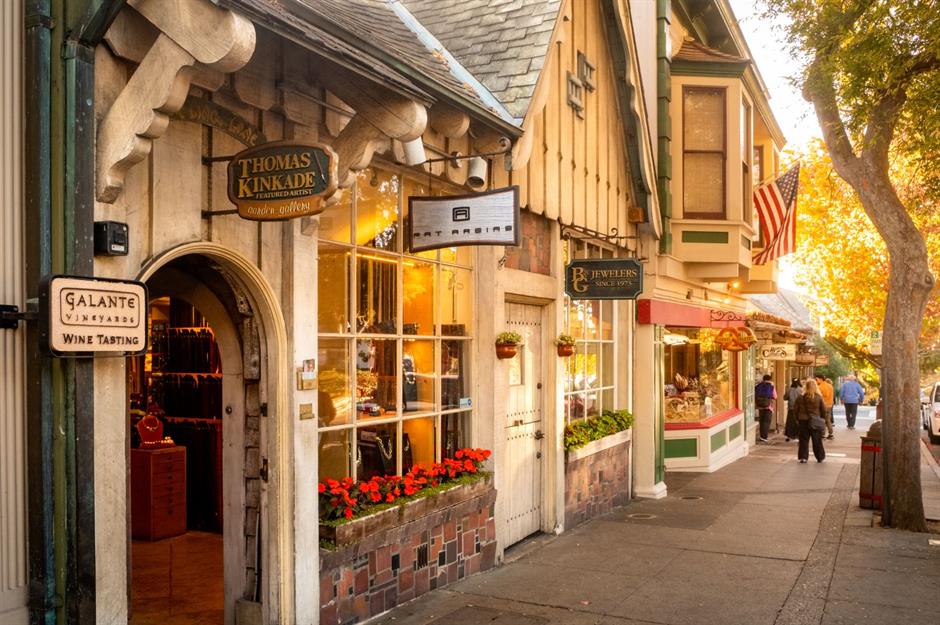
On the Pacific Coast in California, Carmel-by-the-Sea juts out into the rugged ocean on the Monterey Peninsula.
In the early 20th century, Carmel was a magnet for movers and shakers in the art world, who were inspired by the beautiful sandy coastline, framed by rocks and cypress trees.
It still attracts creatives today, including Brad Pitt, who bought a home here in 2022, and Clint Eastwood, who is a former mayor.
Carmel-by-the-Sea, California, USA

If there's one thing Carmel is famous for, it's the stunning, whimsical homes that line its streets.
With a blend of architectural styles, from mock-Tudor and Spanish Colonial to the distinctive storybook cottages with wavy-edged shake roofs by 1920s Carmel resident Hugh Comstock, it's like stepping into a fairytale.
Carmel-by-the-Sea, California, USA
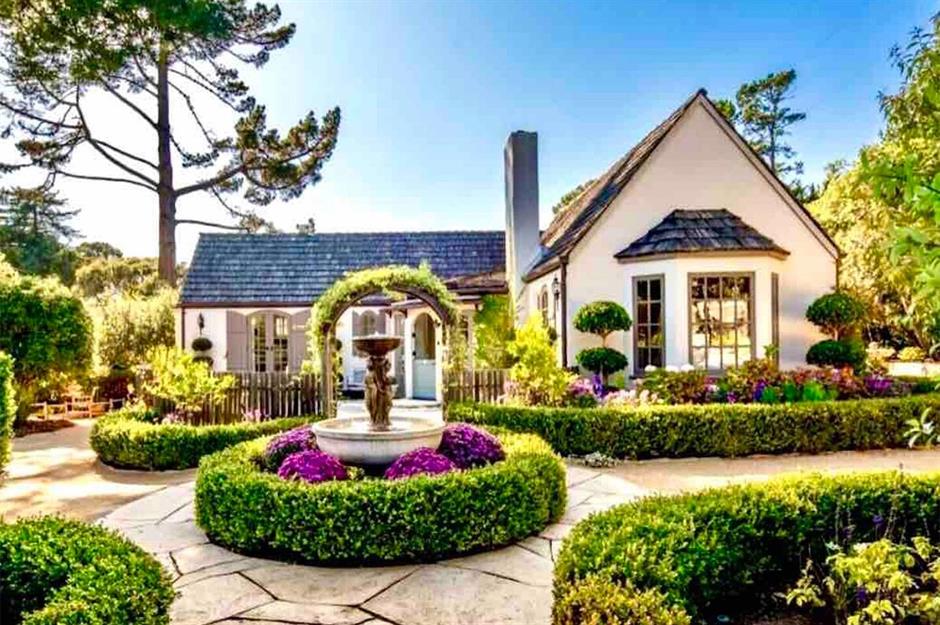
Many of the cottages come with a fun colour scheme and fairytale design details, like this one which has an award-winning private garden.
With a small population of just over 3,000 people, Carmel is said to be one of the best places to live in California. Dotted with bars, restaurants and coffee shops, this cute rental is just blocks away from the action.
Carmel-by-the-Sea, California, USA
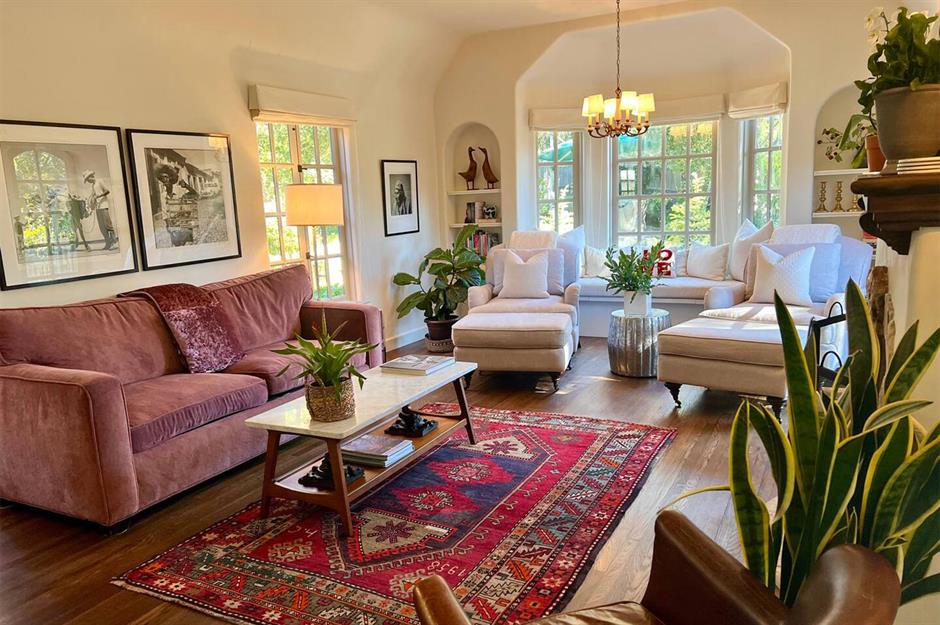
Inside, this quaint, two-bedroom cottage features a large stone fireplace, cosy window seat and French doors leading to the garden.
While it looks straight out of a storybook, like many Carmel-by-the-Sea properties, it has all the necessary mod cons, from a chef's kitchen to a barbecue grill.
Oia, Santorini, Greece
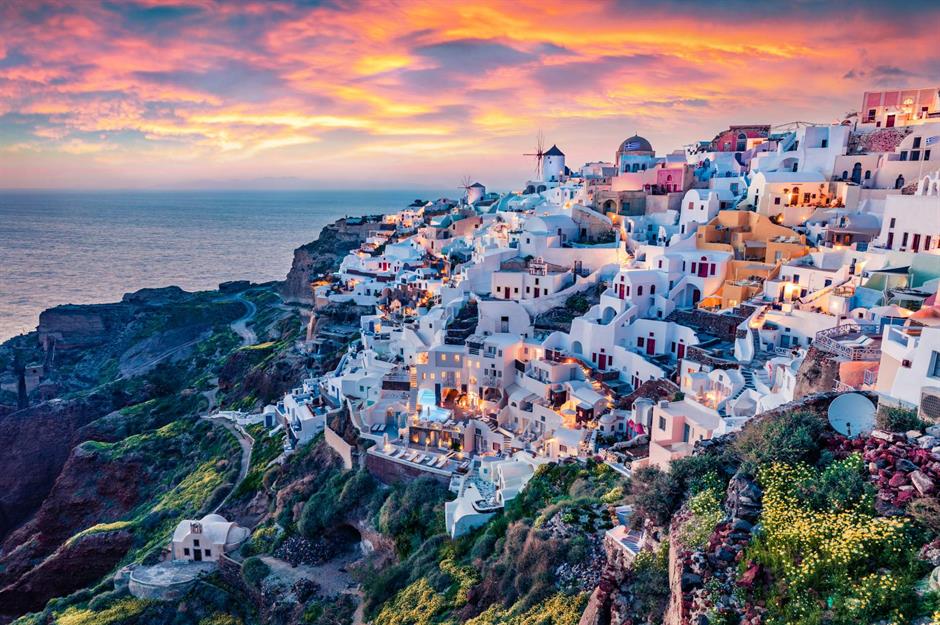
Clinging to a hillside on the northwest coast of Santorini, the village of Oia, which is one of Greece's most photographed locations, has stunning views across the smooth Aegean Sea.
An array of pristine white houses is interspersed with cobalt blue, delicate pink and sunset orange-painted exteriors in what is known as Cycladic Architecture, named after the Cyclades group of Greek islands.
Oia, Santorini, Greece
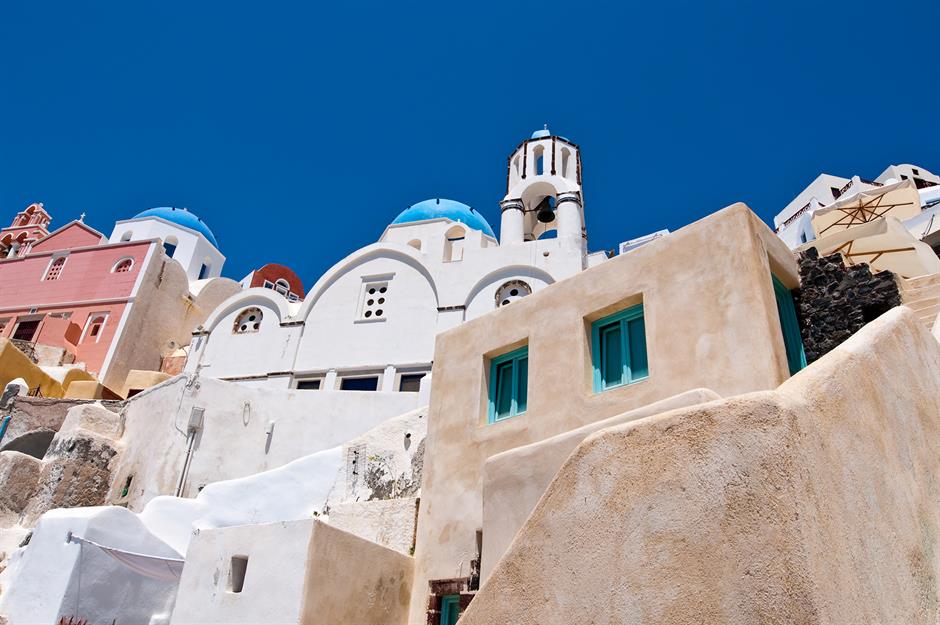
With architecture intended to protect its residents from the summer heat and winter winds, Oia is dominated by two different styles of homes.
The captains’ houses, which were built in a neo-classical style above ground and historically intended for wealthy residents, and the cave houses, which were built into the cliff face and formally inhabited by the poorer residents and sailors.
Oia, Santorini, Greece
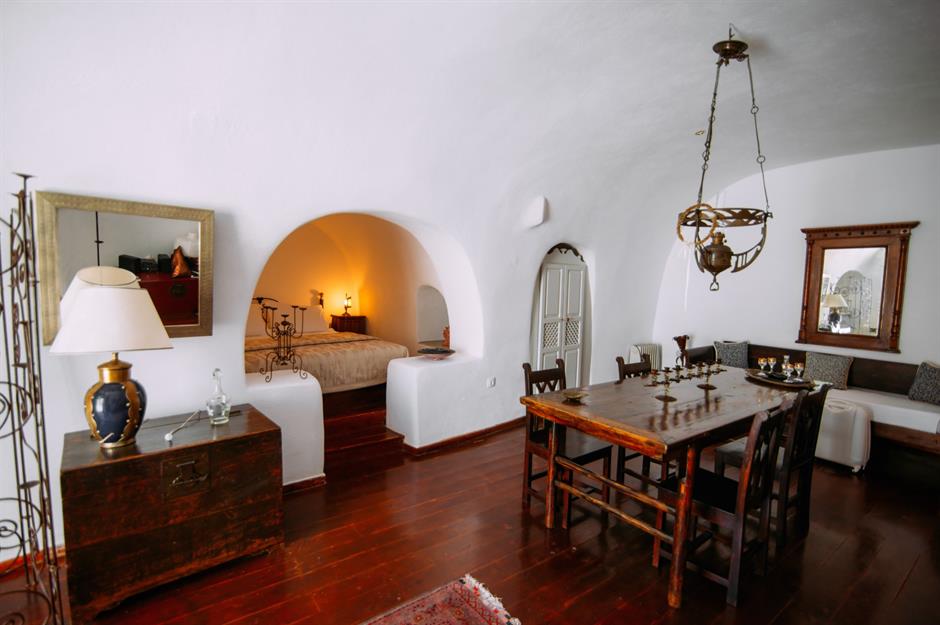
Today, many of the rustic cave homes have been modernised. Taking a look inside one of the homes, you can see just how cavernous it is with curved walls and low ceilings.
The porous volcanic rock makes for a cooling and airy interior during long hot summers, whilst the dark wood flooring and furniture contrast beautifully with the bright white walls, making the room look elegant and inviting.
Oia, Santorini, Greece
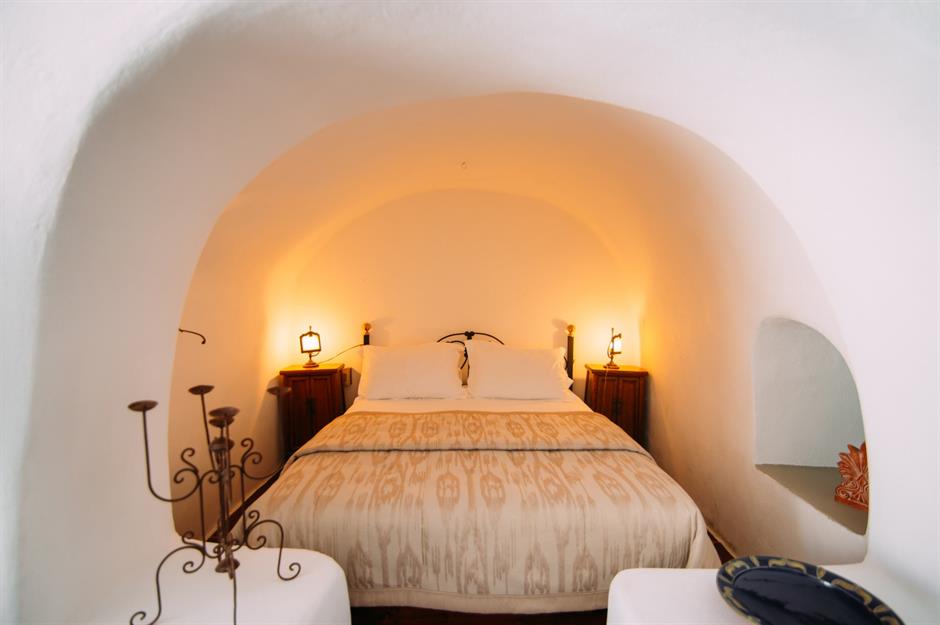
Look at the home’s amazing cocoon-like bedroom! The two architectural styles of Oia are in two different areas, separated by the bustling main street of the village, Marmara.
With boats being the most common form of transport on and off the island, laidback living is the way of life on the idyllic island.
Reine, Moskenes, Norway
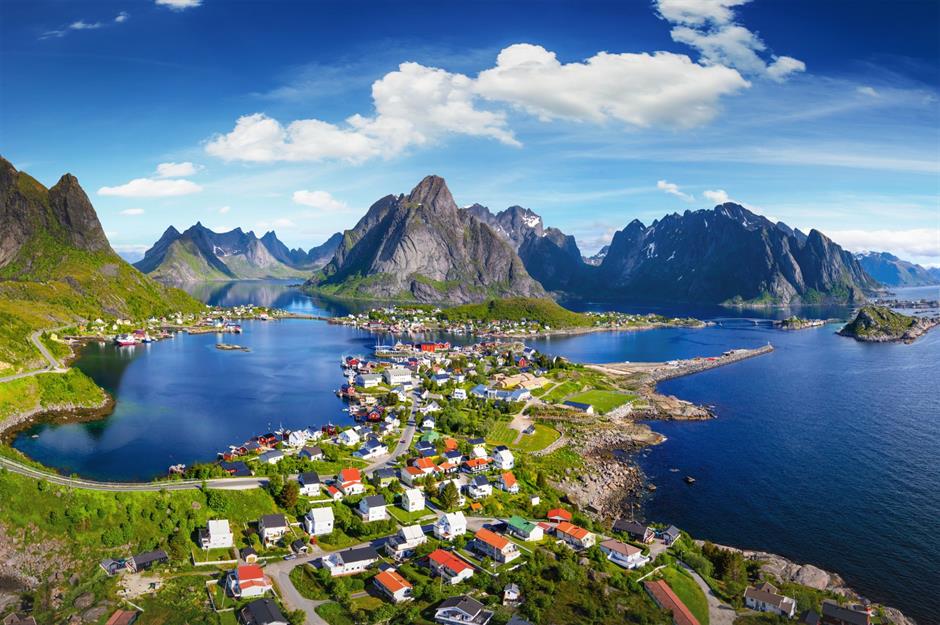
A picture-perfect island village on the Lofoten Archipelago, encircled by majestic granite peaks rising out of the waters of the surrounding fjords, Reine is in the chilly polar region above the Arctic Circle.
An important trading post since the 18th century, the village has a thriving fishing industry.
Reine, Moskenes, Norway
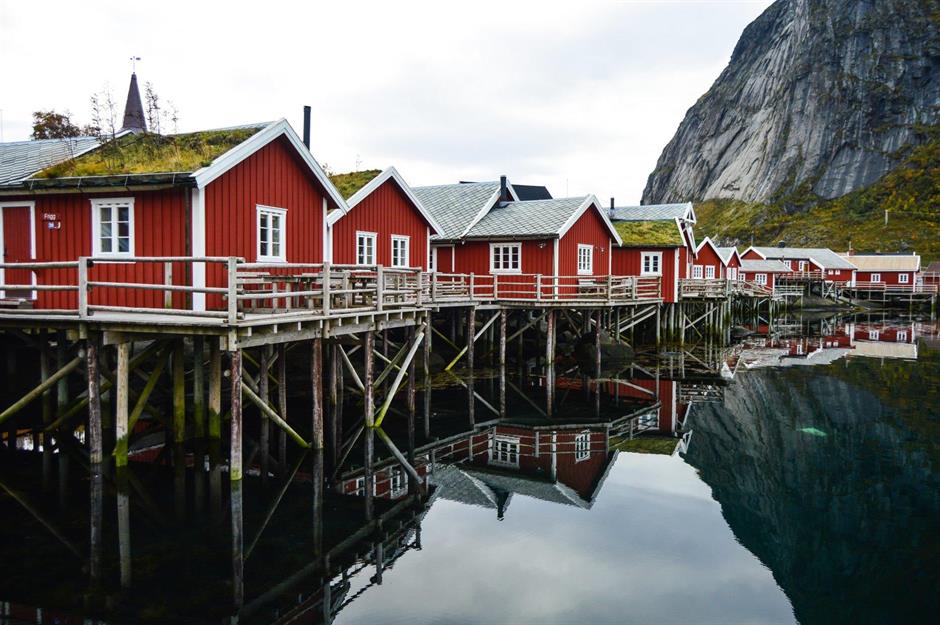
The red and white rorbuer cabins are the most striking sight on the island. Originally built as fishermen’s huts, they are constructed simply with planks of wood and traditional Scandinavian birch bark roofs, which is why some of them look grassy.
This type of roof provides good insulation and its heavy weight stabilises the house.
Reine, Moskenes, Norway

Populated by fishermen, who take advantage of what's said to be the world's greatest cod harvest, Reine is made up of several small islands connected by bridges.
Not an easy place to live, in the winter, the weather is so harsh that the village's estimated 297 locals hibernate in their homes.
Reine, Moskenes, Norway
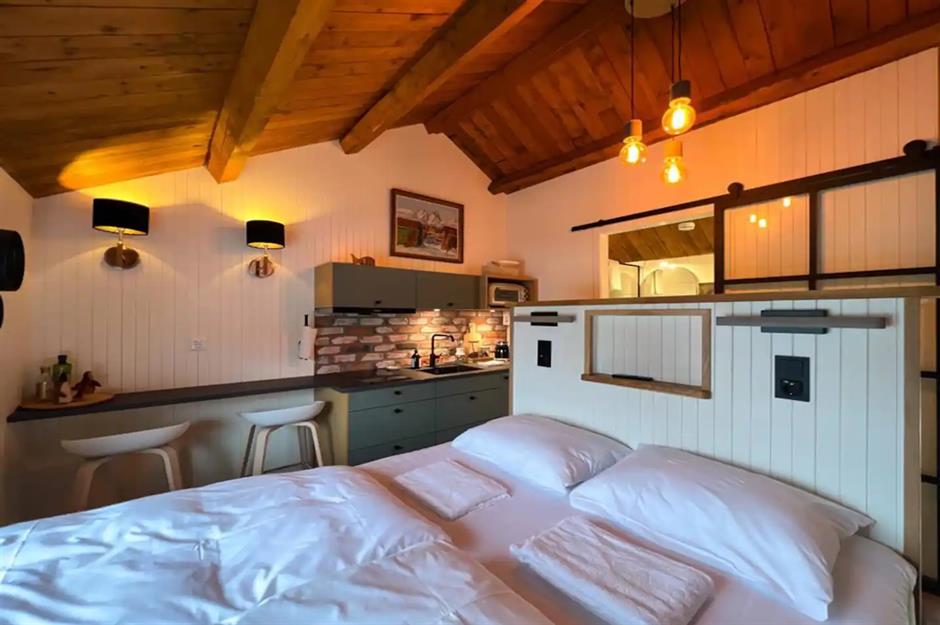
Now, many of the fishermen’s huts have been modernised for holidaymakers, much like this one, with the tourism industry providing a major source of income for the island.
The interior of this Reine cottage has a homely, rustic vibe with exposed wooden cladding and minimal décor.
Iruya, Salta Province, Argentina
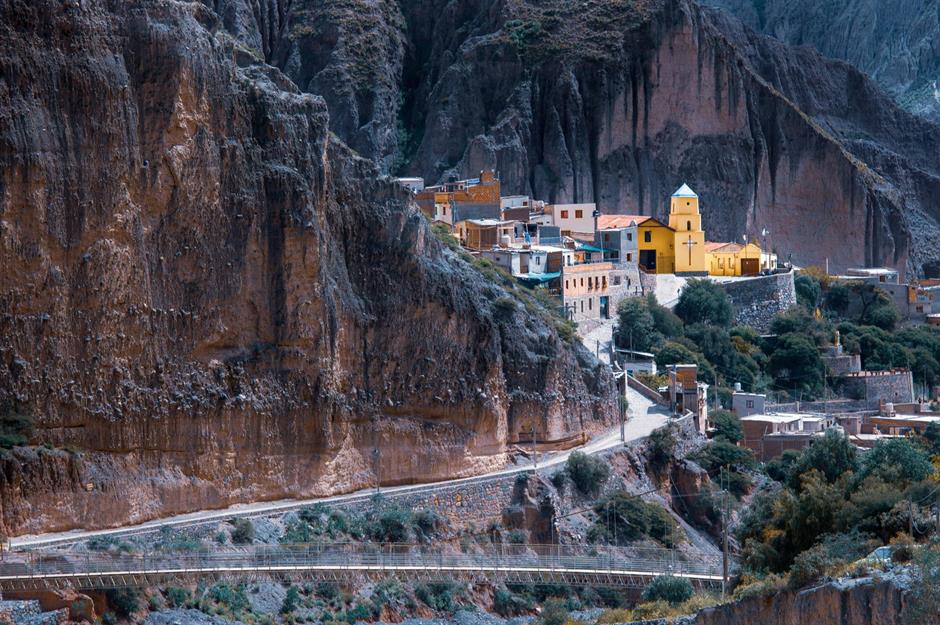
Set against the midnight-blue mountainside in the Altiplano region of northwest Argentina, the tiny village of Iruya looks like a mirage on the landscape.
Remote and hard to reach via a 31-mile (50 km) unpaved road from Humahuaca in Jujuy Province, the settlement dates back to the Incas and has preserved much of its Indigenous culture, although it was colonised by the Spanish from 1753.
Iruya, Salta Province, Argentina

Its narrow cobble-stoned streets are lined with houses made of adobe, a traditional building material based on mud and sometimes mixed with straw or stones.
A place where Indigenous and Hispanic cultures have merged together over the centuries, Iruya’s residents are noted for their warmth, and visitors here will be able to observe clothes, costumes and traditions that have been kept alive for more than 250 years.
Iruya, Salta Province, Argentina

There are few places to stay in Iruya itself, although many of the traditional Andean-style houses have been converted into guesthouses or homestays.
These buildings feature flat roofs, small windows and thick walls, which provide great insulation against both the heat and the cold, and blend beautifully with the surrounding hills.
Iruya, Salta Province, Argentina
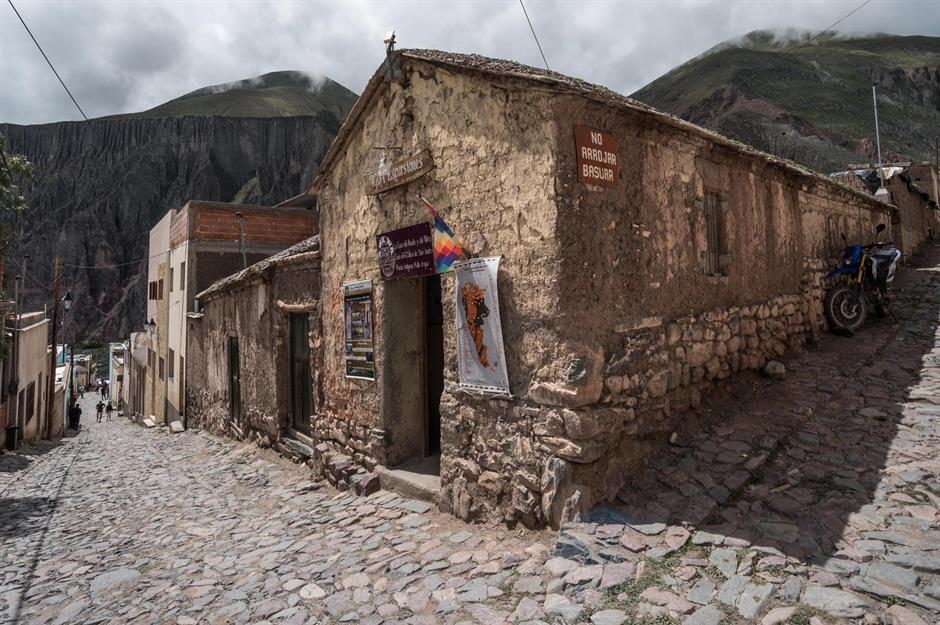
Homes are often styled with exposed stones, ceramics and tiled floors, with many nestled into the hilly landscape granting views of the valley and hills from every room.
Most visitors come to Iruya for its timeless beauty and tranquility. Notable walks include the Mirador del Cruz and the Mirador del Cóndor, named after the enormous birds whose wingspan can be up to 10 feet (3.3m).
Zalipie, Gmina Olesno, Poland
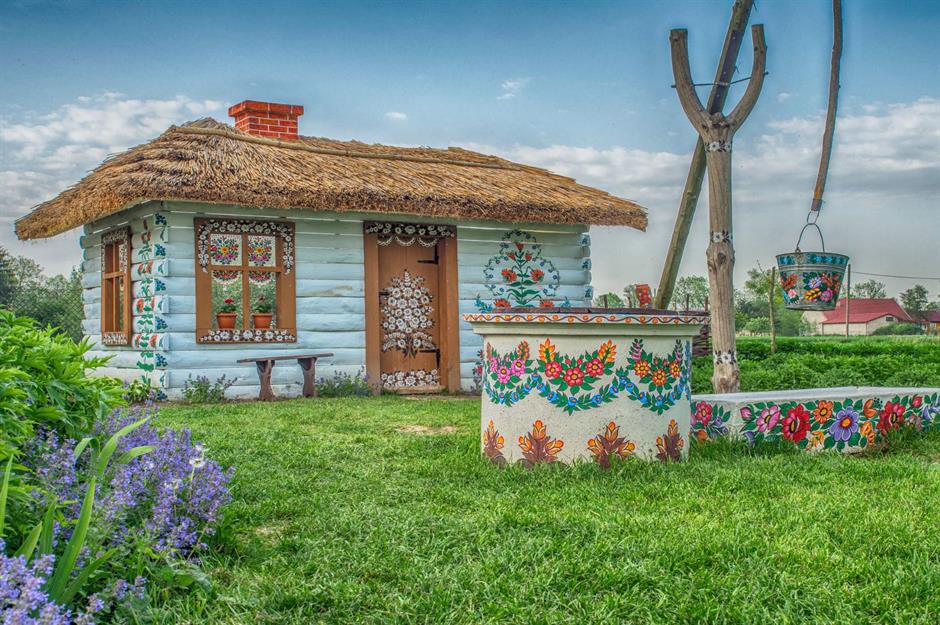
With glorious, folksy patterned hues, the small rural village of Zalipie illuminates a small corner of south-east Poland.
Known as the painted village, almost every surface is daubed with multi-coloured flowers. That includes houses, furniture, utensils, kennels, trees, fences and clothes.
Zalipie, Gmina Olesno, Poland
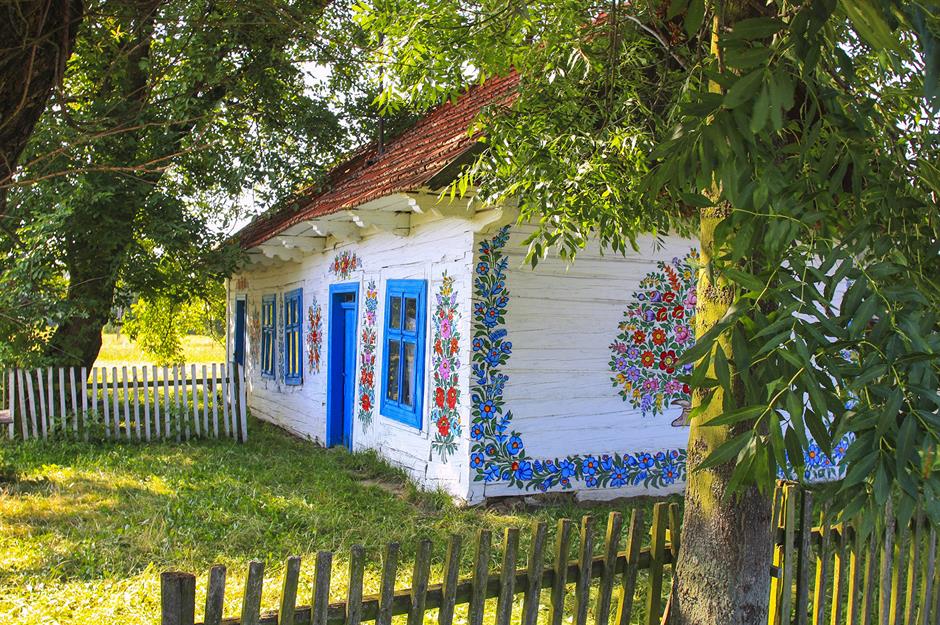
According to local legend, the tradition began in the 19th century, when the women of Zalipie became fed up with their homes being dirty with soot.
So, they covered the marks with white lime paint and artfully added floral displays in vibrant shades. Their paint was originally made with powdered dye and milk.
Zalipie, Gmina Olesno, Poland
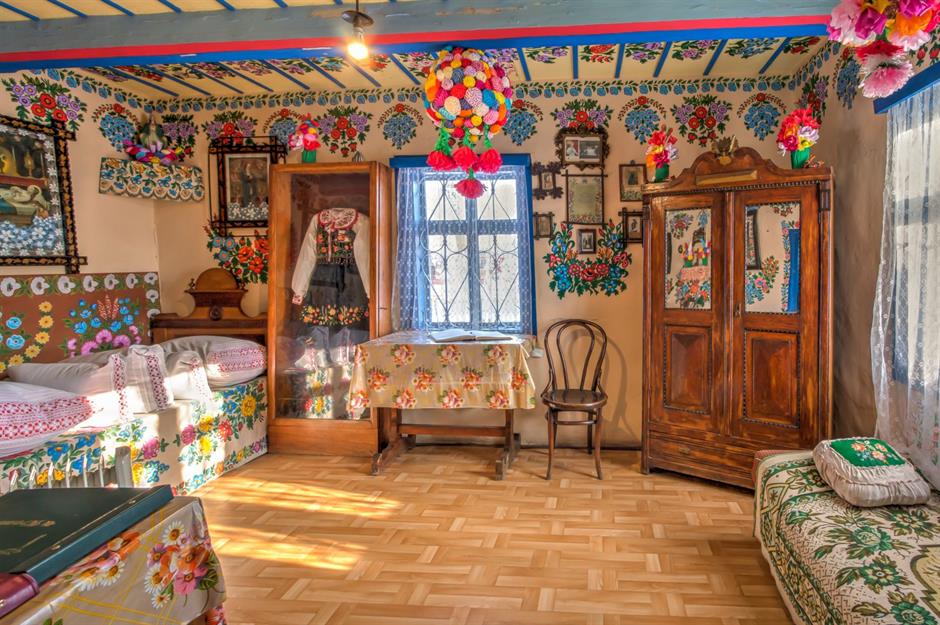
While the houses are small wooden cabins with neat, thatched roofs, it’s the décor that really dazzles!
A remarkable glimpse inside a Zalipie home shows ceilings, walls and furniture adorned with amazing folk art.
Zalipie, Gmina Olesno, Poland
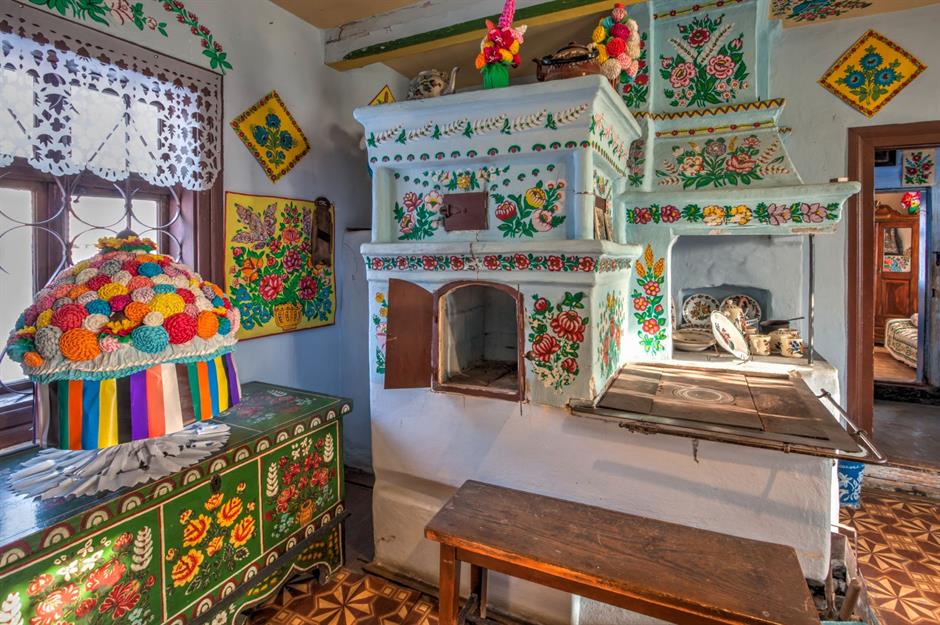
Even the rustic stove in this kitchen is covered with captivating designs, as well as the painted cups and plates on the drainer.
The hand-painted wooden chest also looks sublime. Polish folk artist Felicja Curyłowa lived in the village, and her exceptionally painted house has been turned into a museum.
Giethoorn, Overijssel, the Netherlands
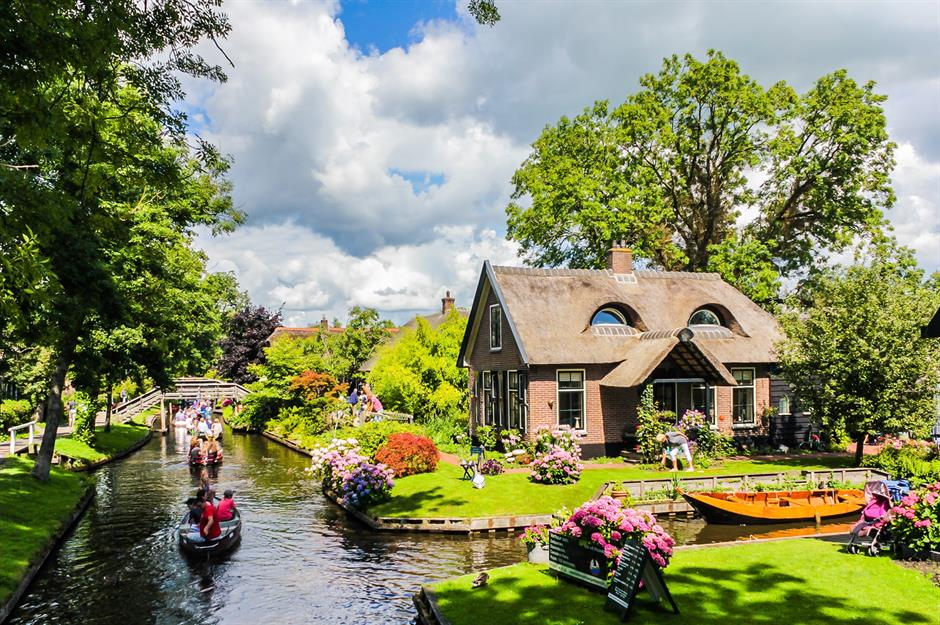
Located in the province of Overijssel in the Netherlands, the Dutch village of Giethoorn is picture-perfect.
Dotted with idyllic thatched-roof homes with stunning gardens, the village is also known as the "Venice of the Netherlands", thanks to its idyllic, winding waterways.
Giethoorn, Overijssel, the Netherlands
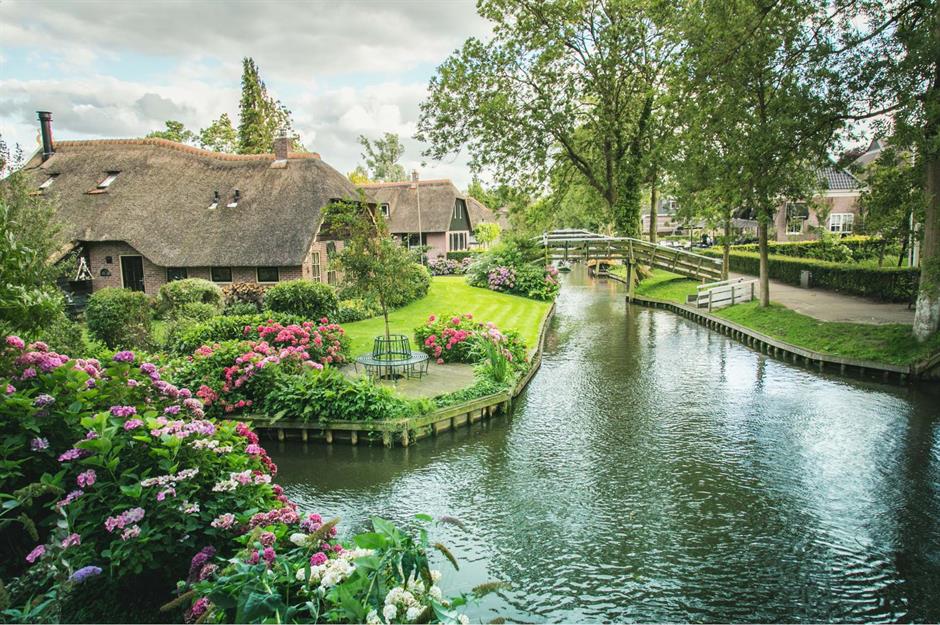
With boats and bridges the main means of transport across the waterways, the centre of the village is completely car-free. Instead, residents prefer gently gliding around the network of canals in narrowboats, propelled along by long poles.
It's a tranquil place to live, perfect for immersing yourself in the beauty of the natural surroundings.
Giethoorn, Overijssel, the Netherlands
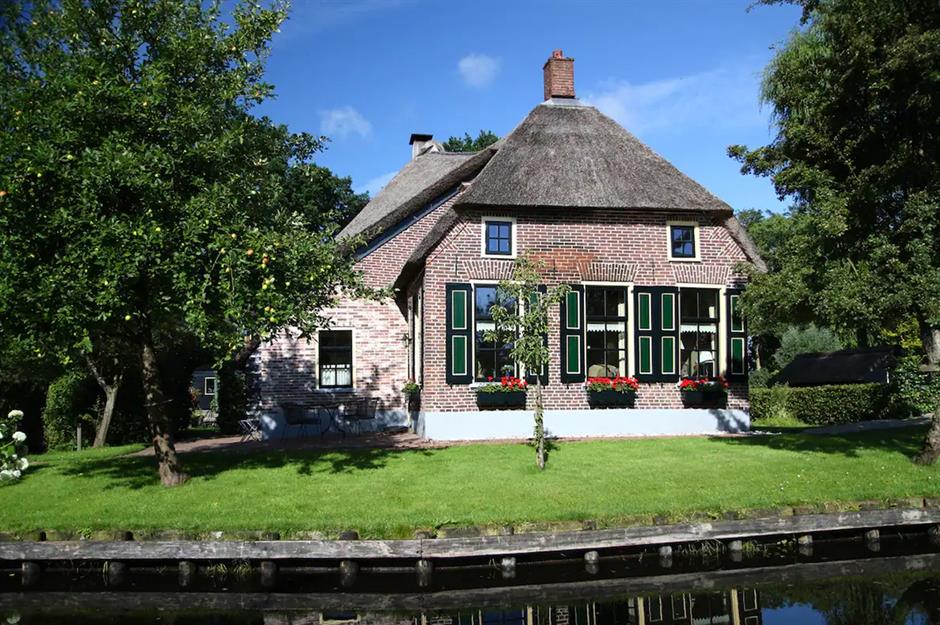
Established some 800 years ago, historic residents dug a channel system by hand that created the village's islands, which were then connected by around 200 bridges.
The centre of the village is mainly inhabited by residents who live in the quaint traditional thatched houses, however, some of the homes are available to rent.
Giethoorn, Overijssel, the Netherlands
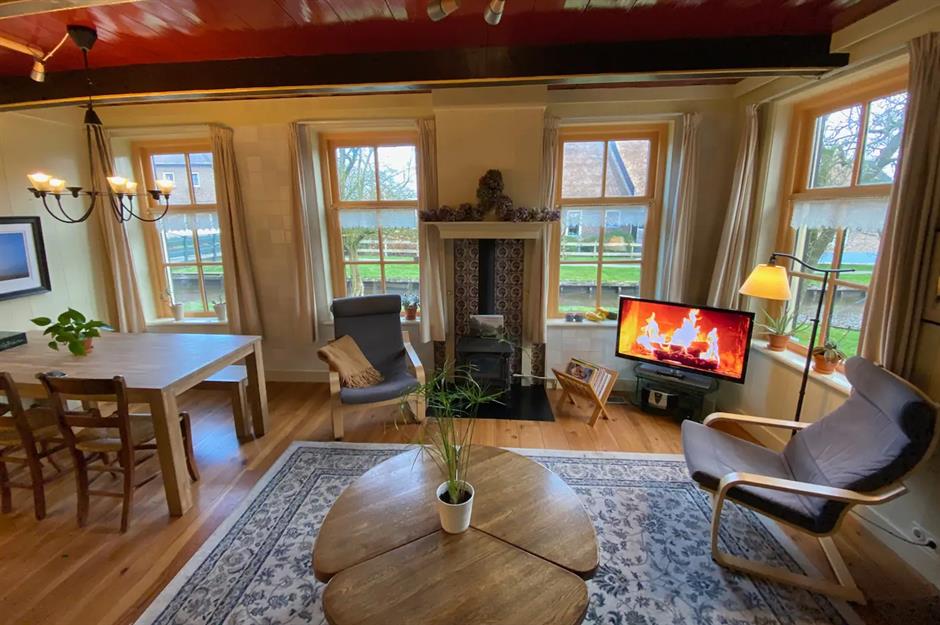
While many of the homes have since received modern facelifts, residents still observe the customs of their forebears. Today, the locals occupying these picturesque houses renew their roofs every 40 years to carry on the quaint tradition.
Inside this cosy holiday home, you'll spot many authentic elements, including petite log-burning fireplaces, ceiling beams, sash windows and gleaming timber floors.
Rothenburg ob der Tauber, Ansbach of Mittelfranken, Germany
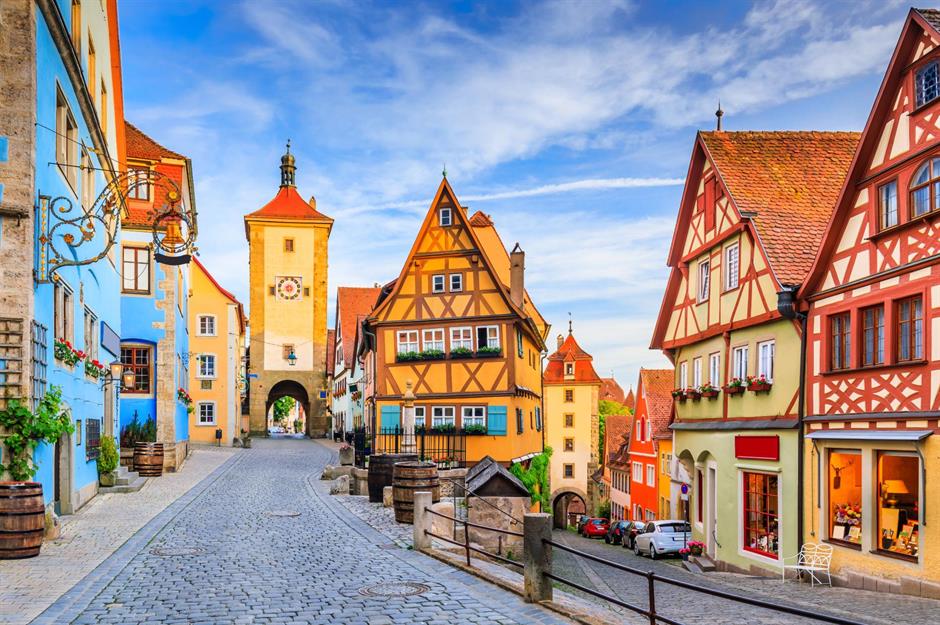
With houses that look like colourfully iced gingerbread biscuits, this Bavarian town has all the charm of a fairytale picture book. In fact, its full name, Rothenburg ob der Tauber, means ‘red castle above the Tauber River’ – and sounds like the title of a Brothers Grimm fable!
The most notable architecture is a mix of Gothic and Renaissance, dating from as early as 1250.
Rothenburg ob der Tauber, Ansbach of Mittelfranken, Germany
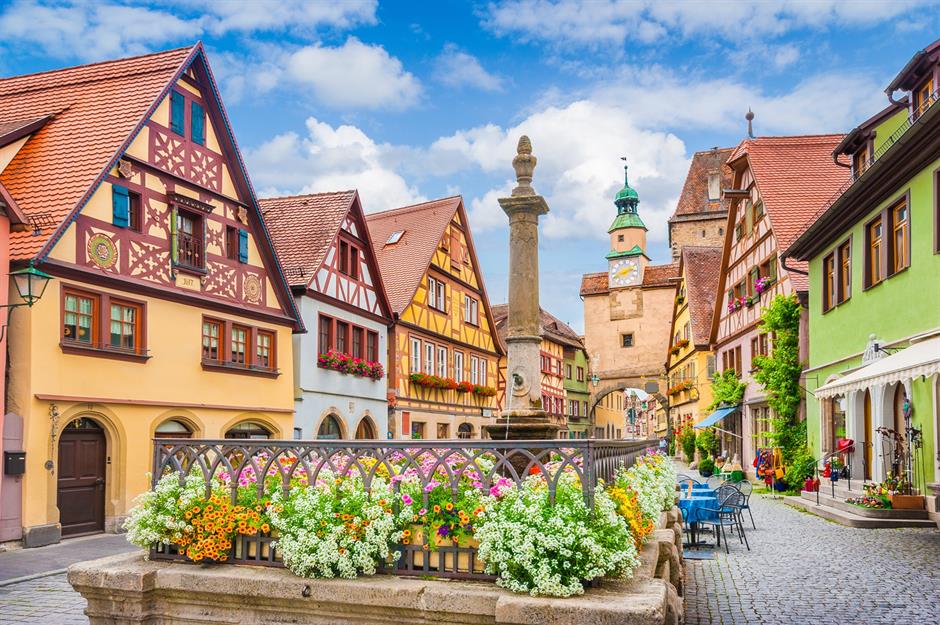
The beautifully preserved medieval architecture is thanks to a law passed in 1900, forbidding any modification or destruction of the old buildings.
Here you can see how the steeply pitched roofs, small and numerous casement windows and bright exteriors give the place its unique charm. Notice the decorative stair-stepped gable roofs and intricate stencil detailing.
Rothenburg ob der Tauber, Ansbach of Mittelfranken, Germany
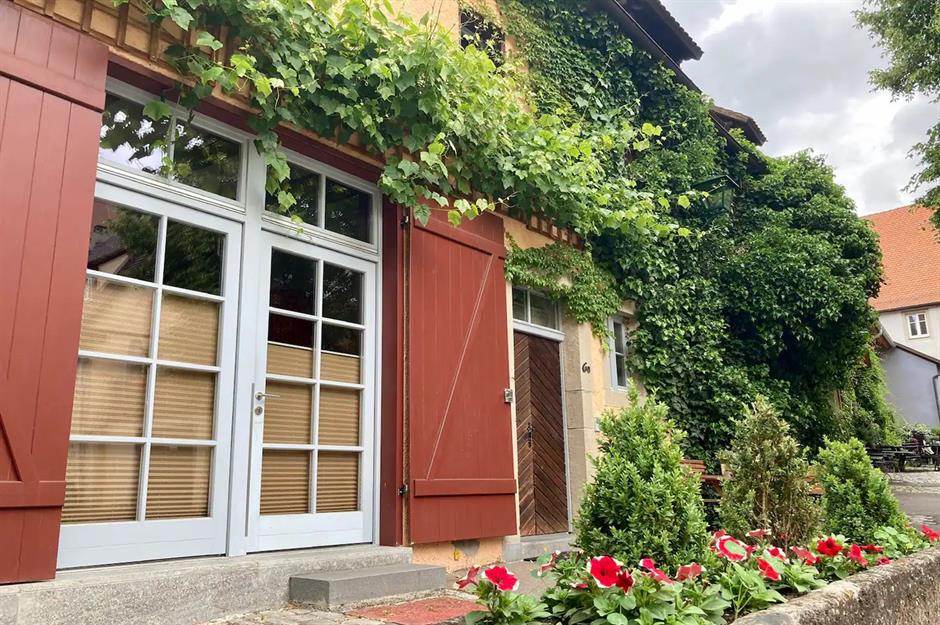
While many of the houses are inhabited by full-time residents, there are a number of hotels and guesthouses that are still full of traditional charm – for over 100 years, no modifications have been made to the buildings inside the town's medieval walls.
Many of the holiday homes benefit from pretty window shutters, gorgeous climbing vines and pretty flower boxes, much like this Airbnb property in the heart of the old town.
Rothenburg ob der Tauber, Ansbach of Mittelfranken, Germany
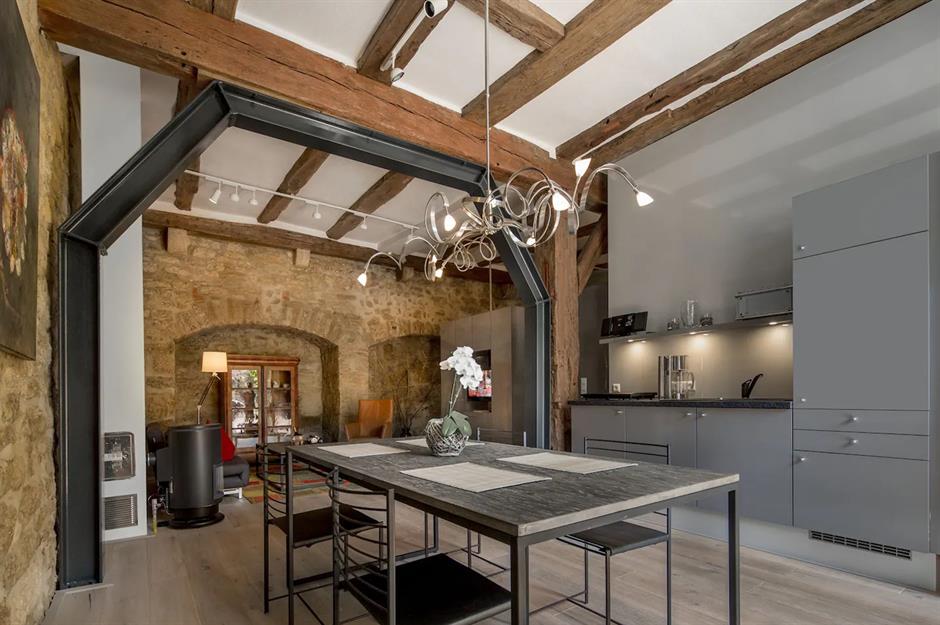
The historic timbered building is wonderfully inviting, with characterful rooms that blend the best of old and new. Think stone walls, soaring ceilings and exposed beams, married with modern furnishings, statement light fixtures and bold artwork.
Bewitching Rothenburg ob der Tauber was the inspiration for the village in the classic 1940 Disney movie, Pinocchio, as well as the village scenes in the 1968 musical fantasy film, Chitty Chitty Bang Bang. Even Harry Potter and the Deathly Hallows was partly filmed in this gorgeous Bavarian locale.
San Cristóbal de las Casas, Chiapas, Mexico
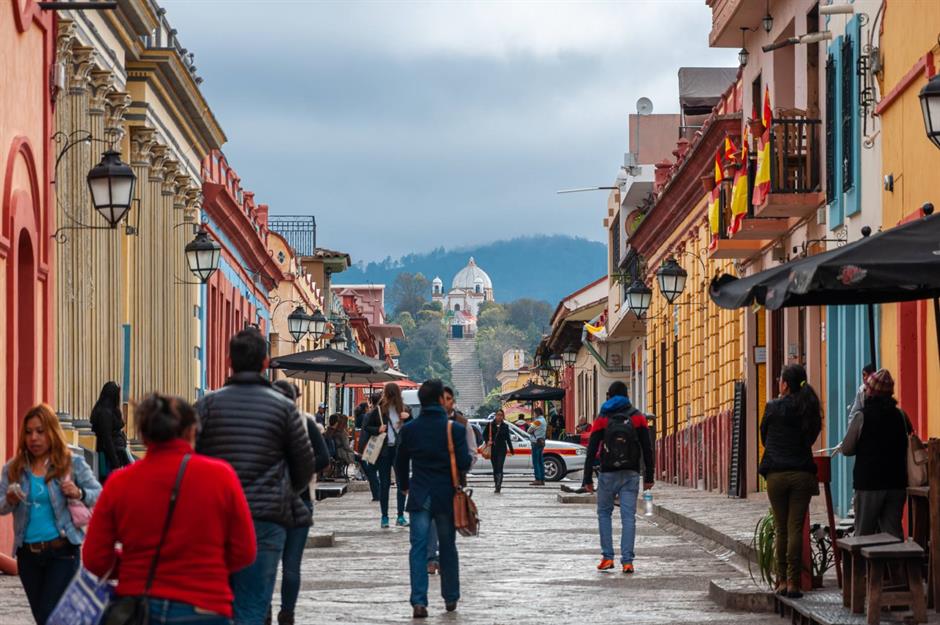
One of the so-called pueblos mágicos or magical towns of Mexico, San Cristóbal de las Casas, stands out for its beautiful setting, colonial architecture and lively traditions.
Nestled in a gorgeous highland valley surrounded by pine forests in the southern state of Chiapas, the city is a major cultural and political centre for the Maya and other Indigenous peoples of the region.
Founded by the Spanish in the 16th century, many colonial buildings remain, including the Guadalupe Church seen in this image, with its panoramic views of the city.
San Cristóbal de las Casas, Chiapas, Mexico

Its cobbled streets lined with the colourful facades of its colonial houses create a charming atmosphere.
Once a stop-off between Mayan ruins and nature reserves, the town has become a bustling tourist centre with its bars and restaurants and famous markets, which sell everything from chocolate and tropical fruits to fried ants and embroidery handicrafts.
San Cristóbal de las Casas, Chiapas, Mexico
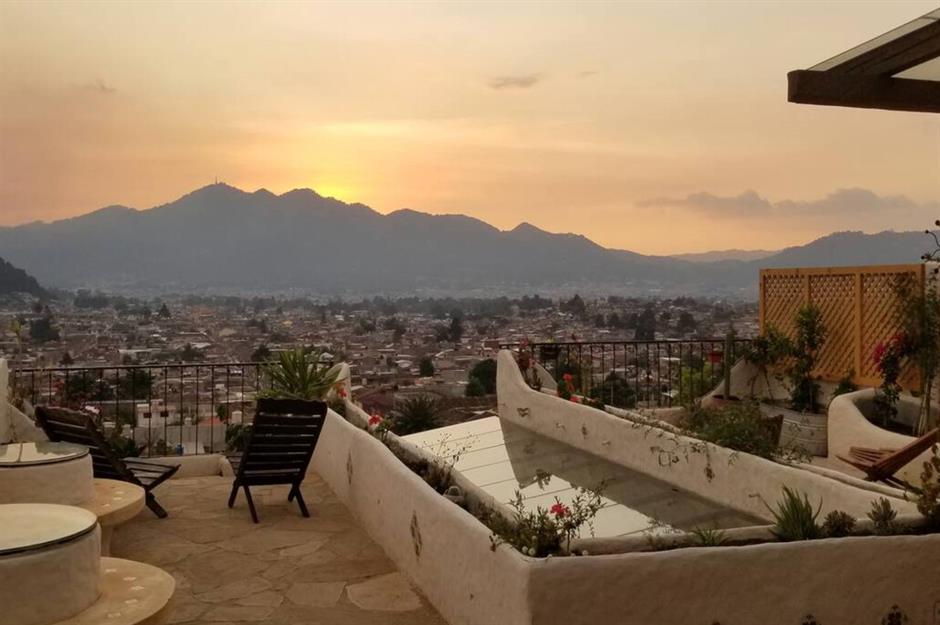
While many of them have been converted into hotels or restaurants, many people still live in the attractive colonial homes with their ornate details and interior courtyards in the centre of the city. Generally, these houses are constructed from adobe (mud bricks) and stones, with red tile roofs.
Few have views like this one, however. Within walking distance of Guadalupe Church and all the major attractions, Casa Ocaso is a world away from the hustle and bustle of the city below and the perfect spot from which to watch the sunset.
San Cristóbal de las Casas, Chiapas, Mexico
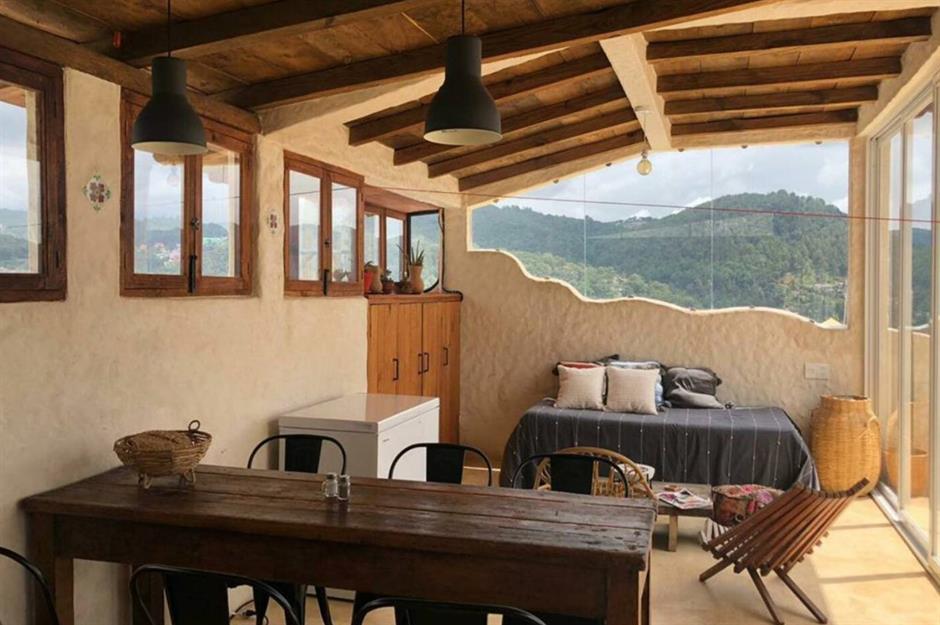
The owners have retained the home’s original adobe and stonework, and used old doors, vintage furniture, and antique Spanish floors to keep the history of the house.
Built on three levels with four bedrooms and four bathrooms, the home has been remodelled to provide views from every room, and is available to rent on Airbnb.
Wengen, Jungfrau Region, Switzerland
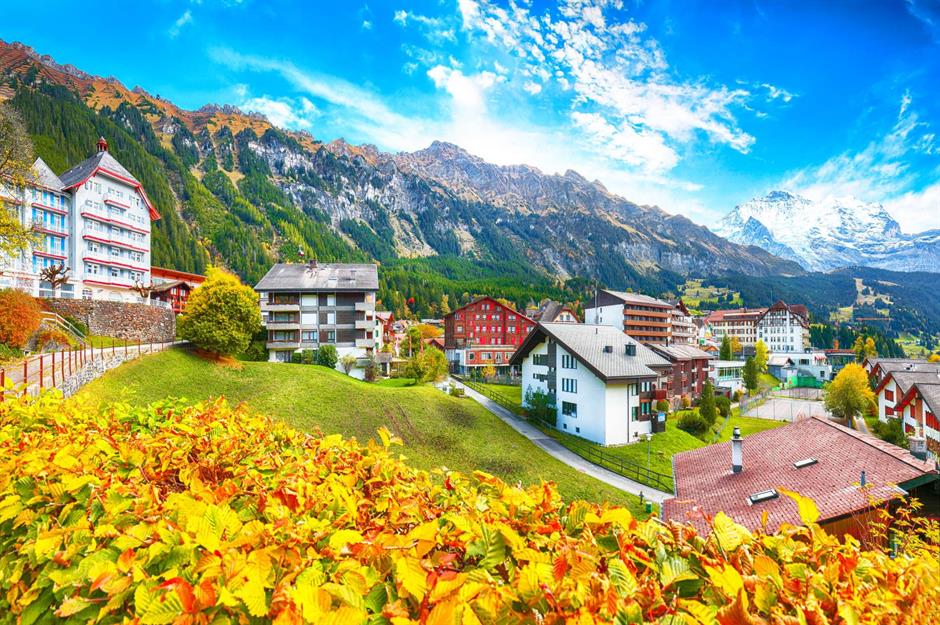
A car-free alpine mountain village, set against the massive Jungfrau summit in the Bernese Alps, Wengen was first recorded as a settlement in the 13th century.
Despite the snowy surroundings, the village is a sun trap as the soaring mountains protect the quaint settlement from chilly winds.
Wengen, Jungfrau Region, Switzerland
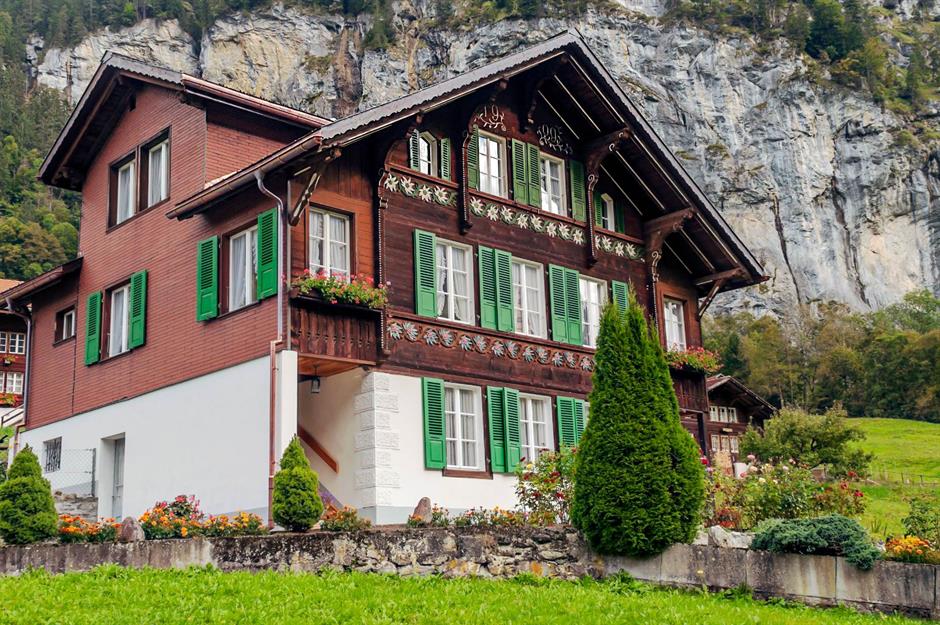
Chalet-style architecture is a hallmark feature of the town.
Originally huts for cattle herders, chalets developed in style and sophistication; they are made of timber and have weighty sloping roofs with defined eaves at the front.
Notice the pretty floral decoration on this rather grand Wengen chalet and the green shutters that only add to the Alpine charm.
Wengen, Jungfrau Region, Switzerland
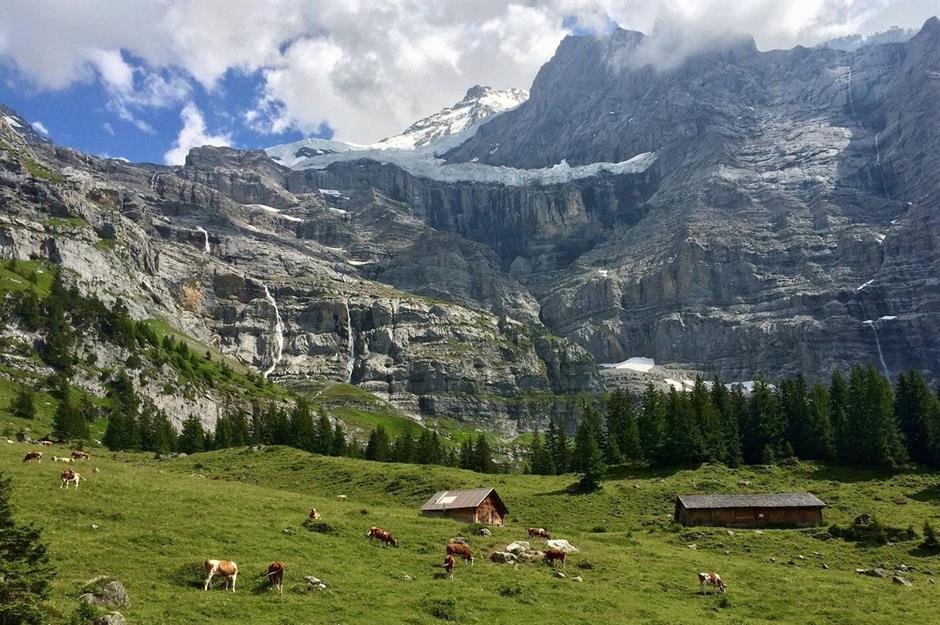
The perfect destination for skiing lovers as well as summer hikers, idyllic Wengen is home to around 1,300 permanent residents.
The traditional farming community plays host to part of the international Ski World Cup, but Wengen has been popular with tourists since the early 19th century, and we can certainly see why!
Wengen, Jungfrau Region, Switzerland

As for the homes in the village, they boast a gorgeous, cosy interior, many with exposed ceiling beams and casement windows.
This holiday rental is available on Airbnb and blends modern rustic touches with traditional elements like rough timber walls and Edison light fixtures.
If you had a more grandiose stay in mind, however, the first five-star hotel in the village, the Grand Hotel Belvedere, opened in December 2024.
Dinant, Walloon Region, Belgium
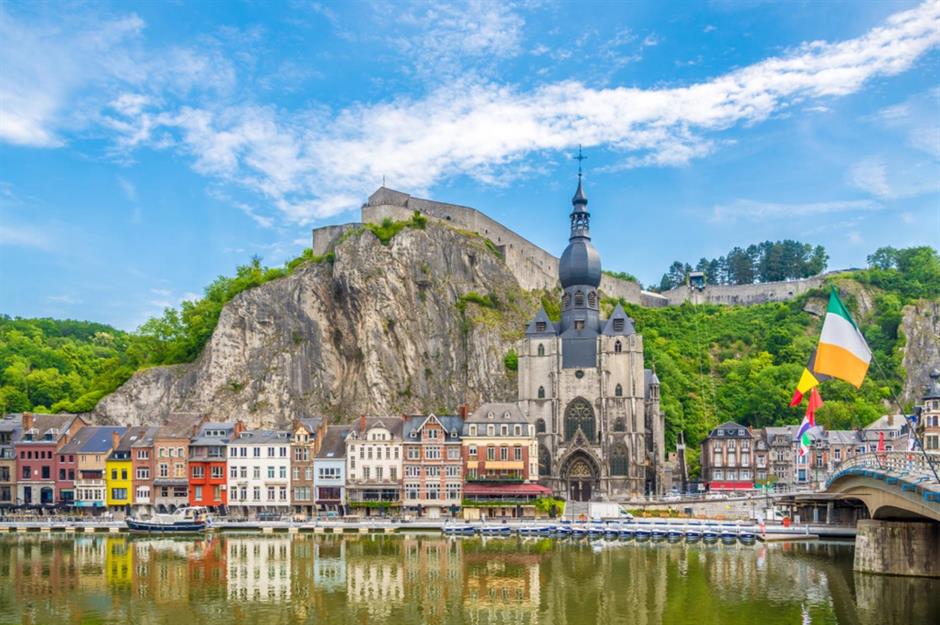
The chocolate box town of Dinant, with its stunning Gothic cathedral and elegant houses, is often described as one of the prettiest towns in Belgium.
The name of this former Celtic settlement, Dinant, means “divine valley.” It is on the banks of the River Meuse in French-speaking Wallonia.
Dinant has some of Belgium’s most picturesque buildings, including the majestic Collégiale Notre-Dame de Dinant, with its unique pear-shaped bell tower. The clifftop citadelle offers breathtaking views of the Meuse valley.
Dinant, Walloon Region, Belgium
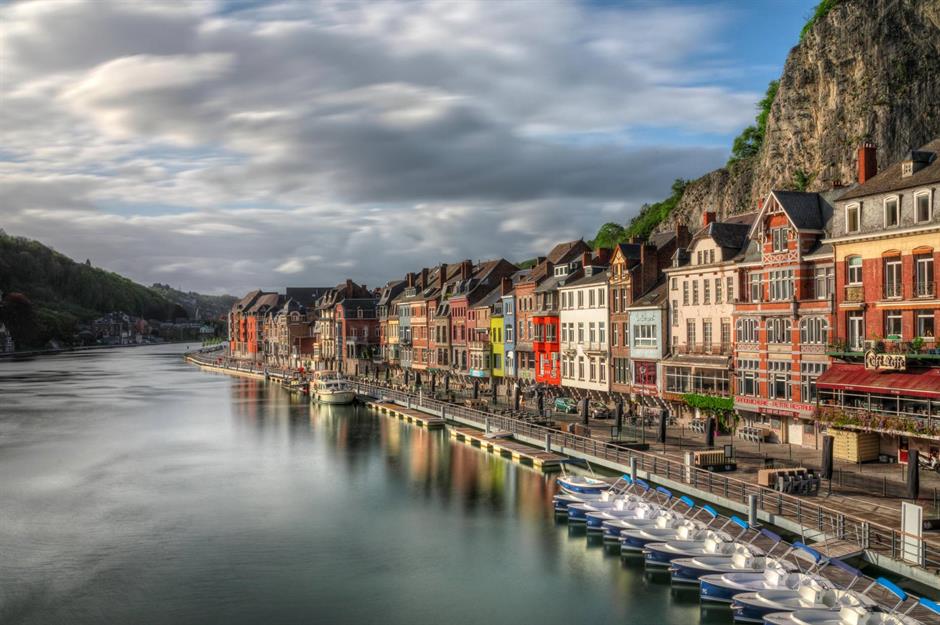
Reflected in the glass-like surface of the river, the colourful houses of Dinant, many constructed from red brick, are of a distinctive Belgian style, with uniform facades and ornate gables.
You can wander through the charming cobbled streets of the town centre, discovering hidden squares, local shops and traditional cafes, where you can treat yourself to a glass of Leffe, probably Belgium’s most famous beer, which originated in the Abbaye Notre Dame de Leffe in 1240. Sadly, the abbey is no longer standing.
Dinant, Walloon Region, Belgium
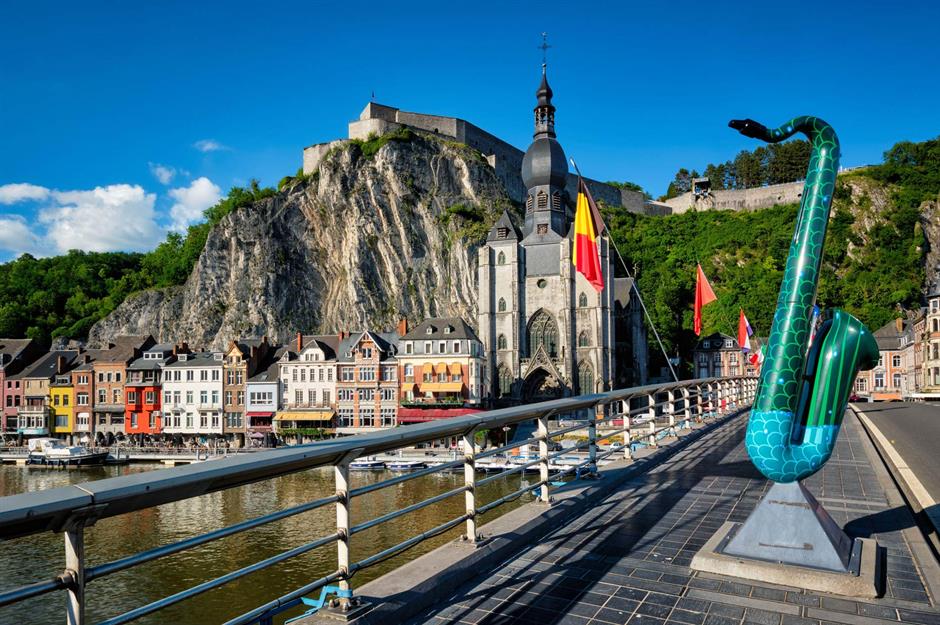
Many of the traditional houses overlooking the river are available to rent. Some have even been named in honour of the town’s most famous son, Adolphe Sax, the inventor of the saxophone. His childhood home has been converted into a museum.
The town is justly proud of its iconic inventor, and the main bridge in Dinant is adorned with 28 colourful saxophones, each representing a country in the European Union.
Dinant, Walloon Region, Belgium

For the perfect view of the bridge, abbey and picturesque houses, the homes on the opposite side of the river grant incredible views.
Many are available to rent on Airbnb, including this apartment with the perfect balcony for soaking up the scenery. Aptly named Nugget, the home is far more modern than its across the river counterparts, but the perfect base for exploring the town.
Valparaíso, Valparaíso Region, Chile

Known for its brightly coloured houses, the Chilean port city of Valparaíso is a vibrant, chaotic jumble of grand mansions, townhouses, shanties and patches of wilderness, connected by steep, cobbled roads and eight very welcome funicular lifts.
The custom of painting their houses vivid colours began before the opening of the Panama Canal in 1914, when many ships used the port as a stopover between the Atlantic and Pacific Oceans.
Locals would use leftover paint from the ships in the dock to decorate and protect their homes from the harsh salt air. Since every tin contained a different shade, the town soon became a myriad of striking colours.
Valparaíso, Valparaíso Region, Chile
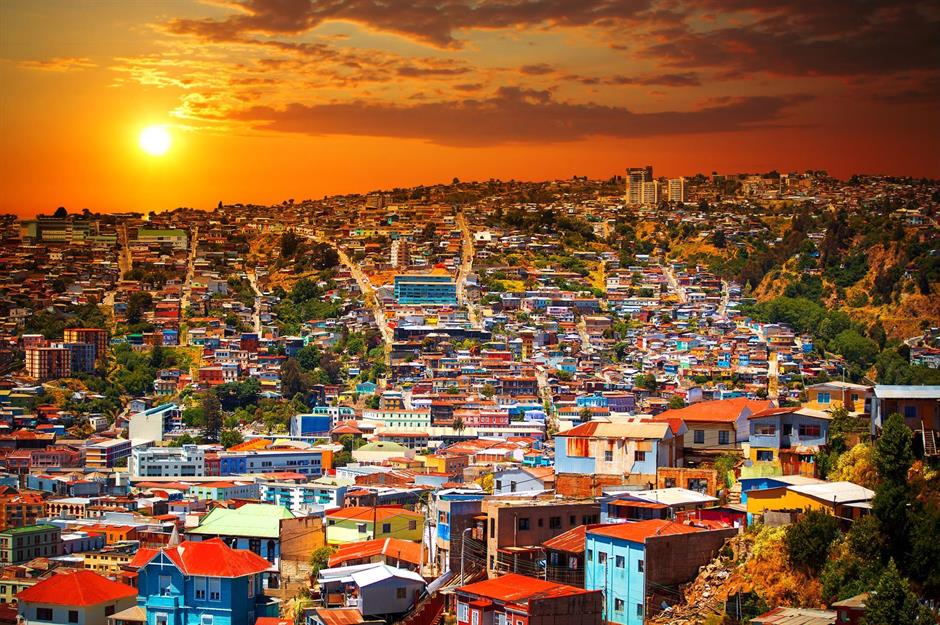
The bohemian seaside city has inspired many artists and writers, including famous Chilean poet Pablo Neruda, who loved its scruffiness and sprawl of multi-coloured houses. He had a home here, La Sebastiana, on Florida Hill, which is now a museum, as well as another coastal property not far away in Isla Negra, where he is buried.
Much of Valparaíso is being rejuvenated with restored houses opening as restaurants, cafés and galleries. Take a funicular up the steepest slopes to gaze across at the kaleidoscope of bright clapboard houses.
Valparaíso, Valparaíso Region, Chile
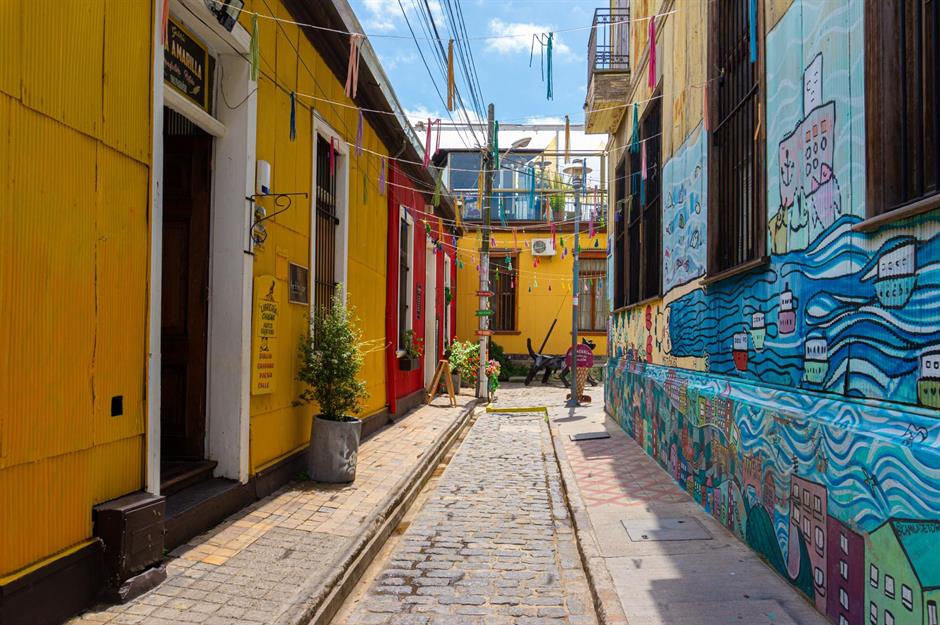
A centre of culture and street art, you can’t wander far in Valparaíso before discovering its famous graffiti art and murals, which embellish walls and the sides of entire buildings.
Blending harmoniously with the colourful homes that surround them, these beautiful murals have made Valparaíso the undisputed capital of urban art in South America and attract thousands of tourists every year.
Valparaíso, Valparaíso Region, Chile
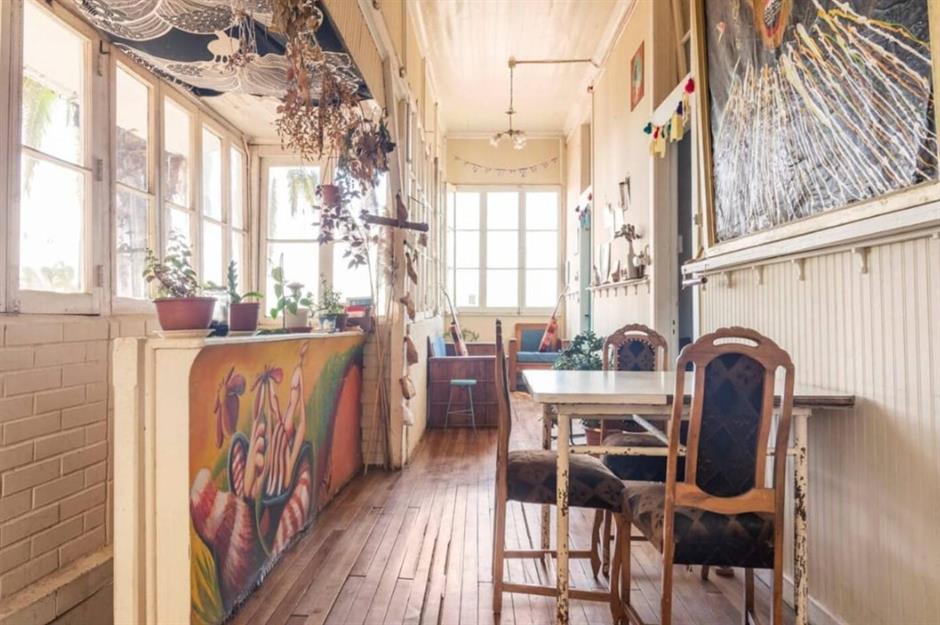
No surprise then to see that some residents have embraced the tradition in their home interiors. This bohemian townhouse has been decorated with original artworks, including a home-made mural on the side of the stairwell, while vintage pieces furnish the dining area.
Located high up in the heart of Valparaíso, Casa Porteña has stunning views of the harbour from its terrace, where there's a hammock and an avocado tree. Sadly, the entire house is not available, but you can rent a room on Airbnb.
Love this? Take a look at these architectural marvels
Comments
Be the first to comment
Do you want to comment on this article? You need to be signed in for this feature